John and Mary Kormendy: Birding in Bolivia (September 2 - 23, 2022)
These pictures are from a Victor Emanuel Nature Tours birding trip to Bolivia. We visited a wide range of habitats from the dry Gran Chaco south of Santa Cruz to Yungas cloud forest at mid-elevations (5000 to 9000 feet) to the dry altiplano (~ 11000 to ~ 14000 feet altitude). The tour was strenuous, more so for Mary than for John, but difficult for both. But the birding was wonderfully rich and the guiding was superb. John got 140 life birds and Mary got 76. We had to cut the tour short by 4 days, because John got a chest cold from hiking in the wind.
This web site is organized chronologically, not by taxonomy. It is well started, but many pictures still need to be added. It will grow in the coming year, but only slowly, because we will be traveling for much of 2023. Pictures are copyrighted and should not be used without permission.
Trip Birds

Red-fronted macaw (This is John's first trip bird and Mary's second. Spectacular bird, now disturbingly rare, with a world population of only a few hundred. John got prolonged close looks and videos of their lively social life -- a wonderful treat.)

Blue-throated macaw is John's second and Mary's first trip bird. It is even rarer that Red-fronted macaw, with a world population of only a few hundred (estimates vary from about 100 to about 300). It was a priviledge to see them close up.

John's third trip bird was Ornate tinamou, seen on the altiplano on the way from Cochabamba to Oruro.

Mary's third trip bird was Mountain wren. It put on a spectacular show for us.
The Birds
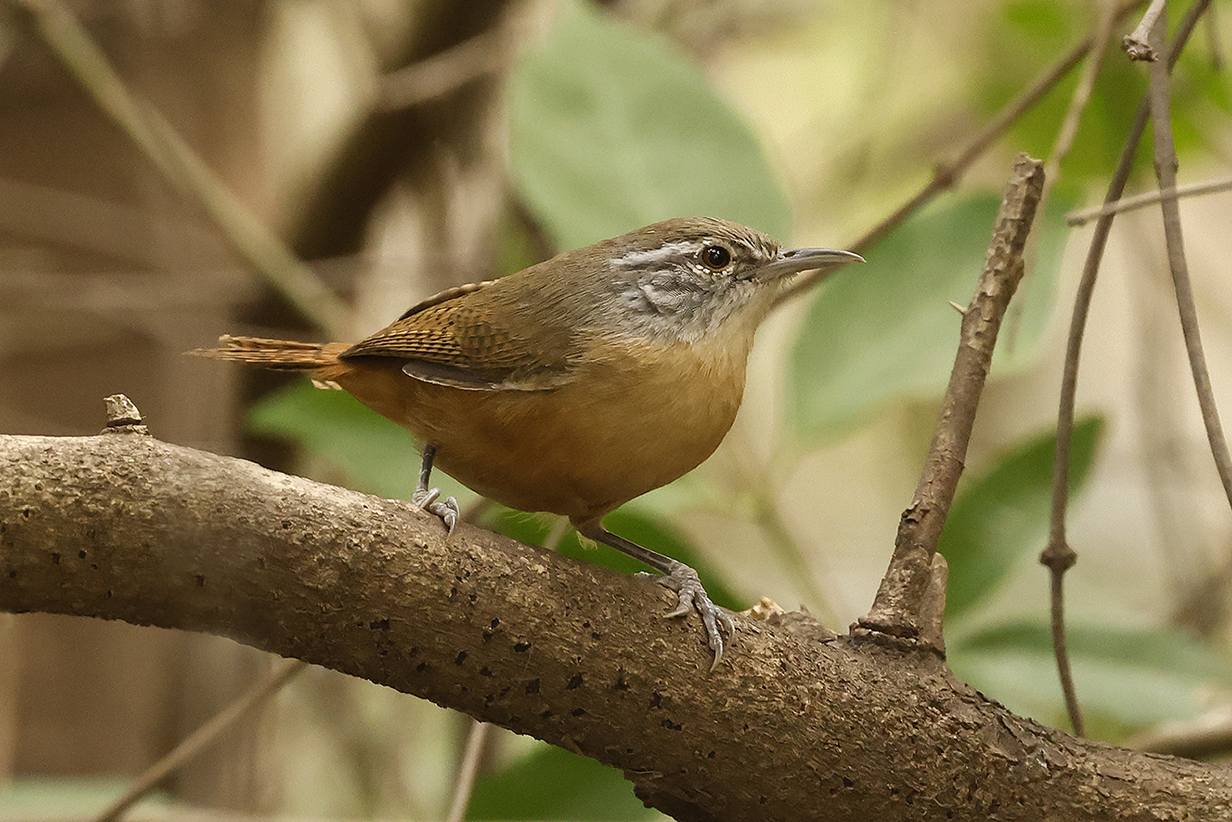
Fawn-breasted wren (Santa Cruz, Bolivia, botanical gardens)
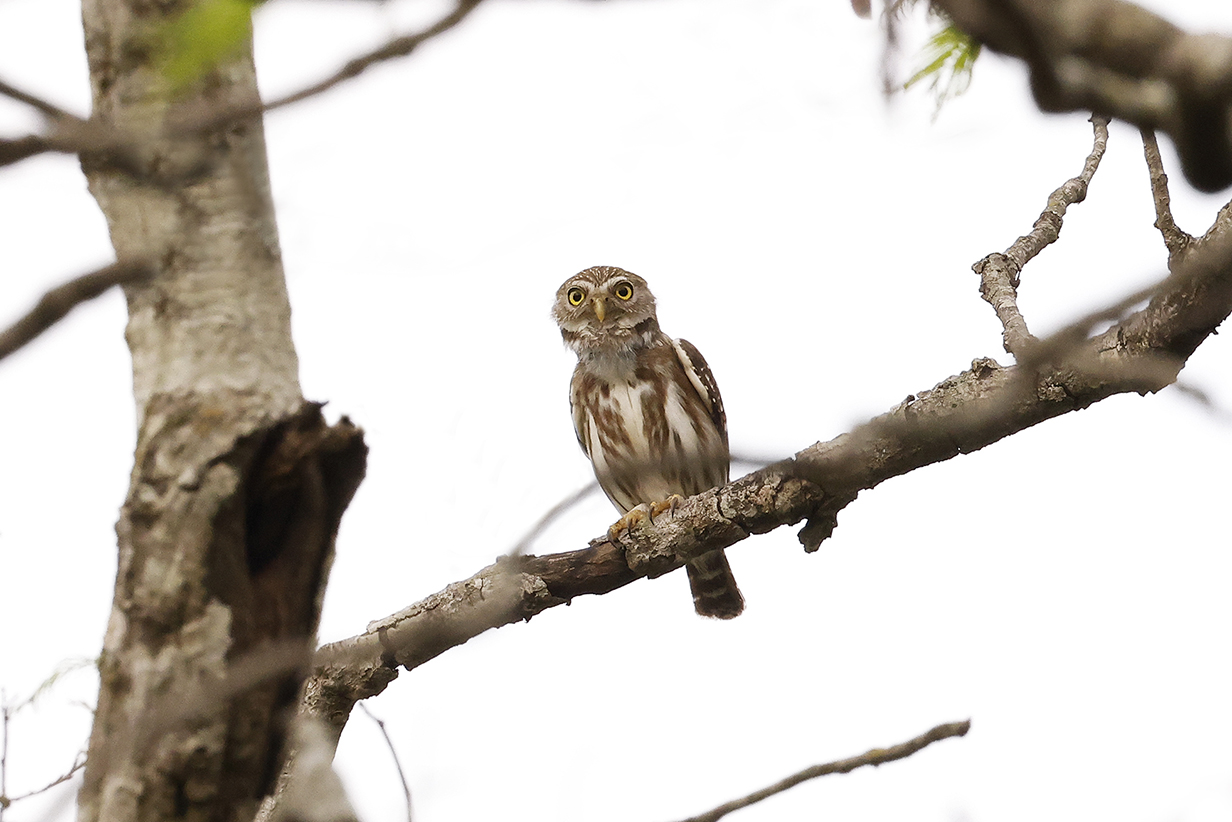
Ferruginous pygmy-owl (This one was at the botanical garden, but we heard it often during the trip and saw one several times.)

Dusky-green oropendola (This is our life bird.)
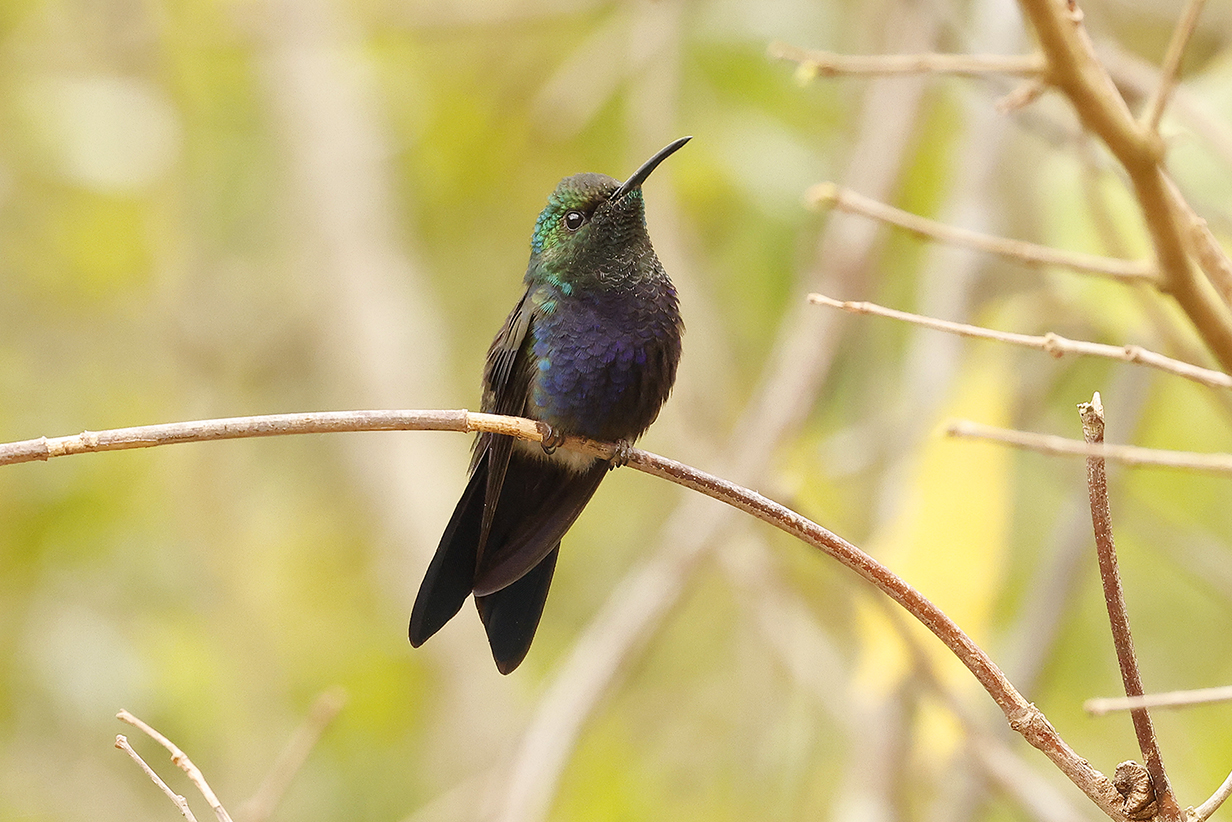
Fork-tailed woodnymph (Refugio los Volcanes) (We saw and photographed few hummingbirds during this trip, because we saw no hummingbird feeders in Bolivia. But we did get a few new hummers, and this one -- not new -- posed nicely for us.)
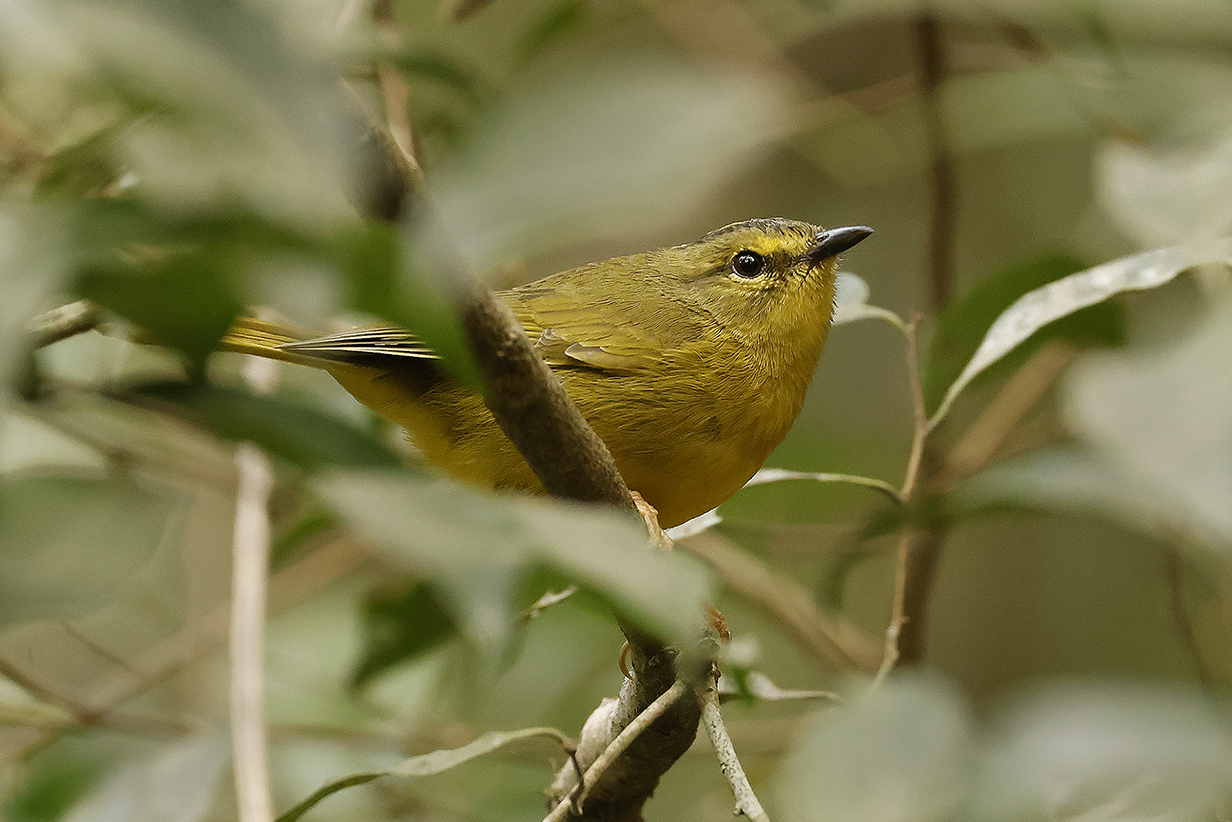
Two-banded warbler (This is John's life bird.)
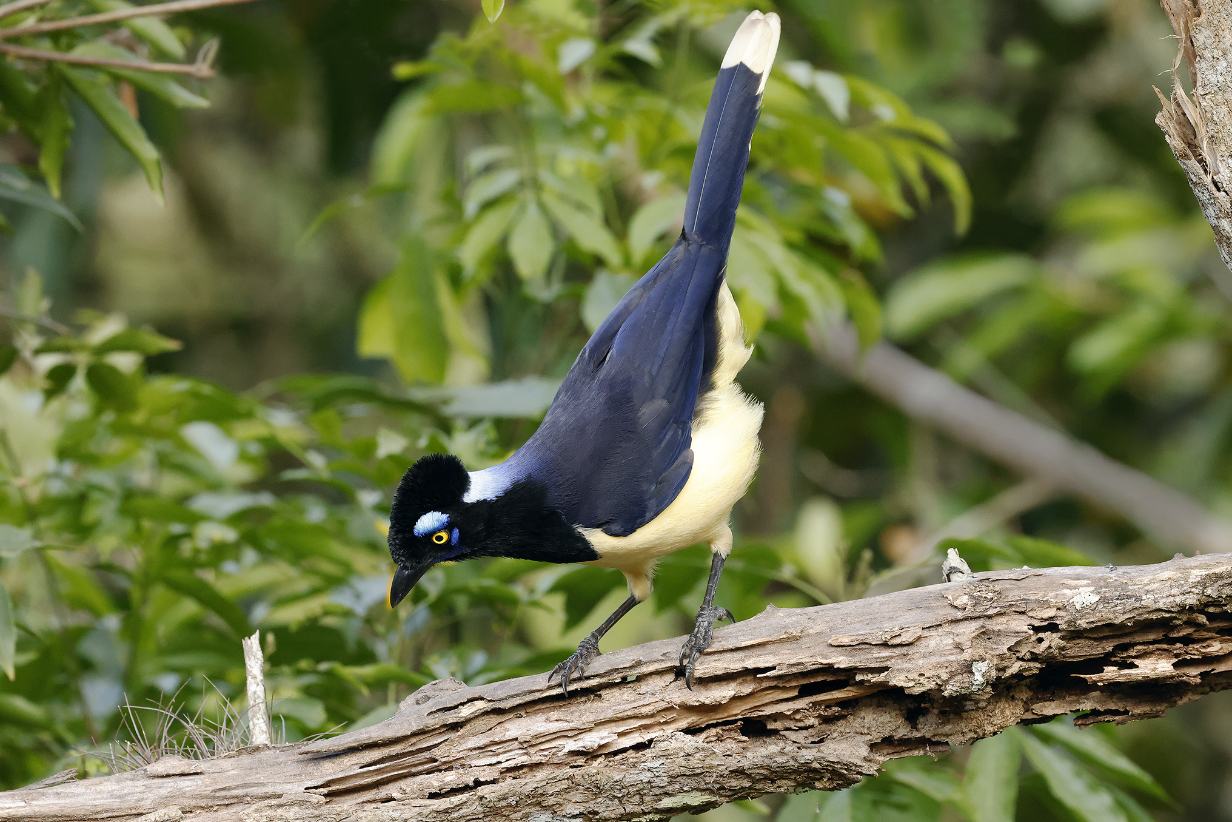
Plush-crested jay was new during this trip, but this is not our life bird.

Bolivian tapaculo (This is John's life bird and one of his favorites. The bird displayed unusually well, but John happened not to be standing in the best place for a good picture.)
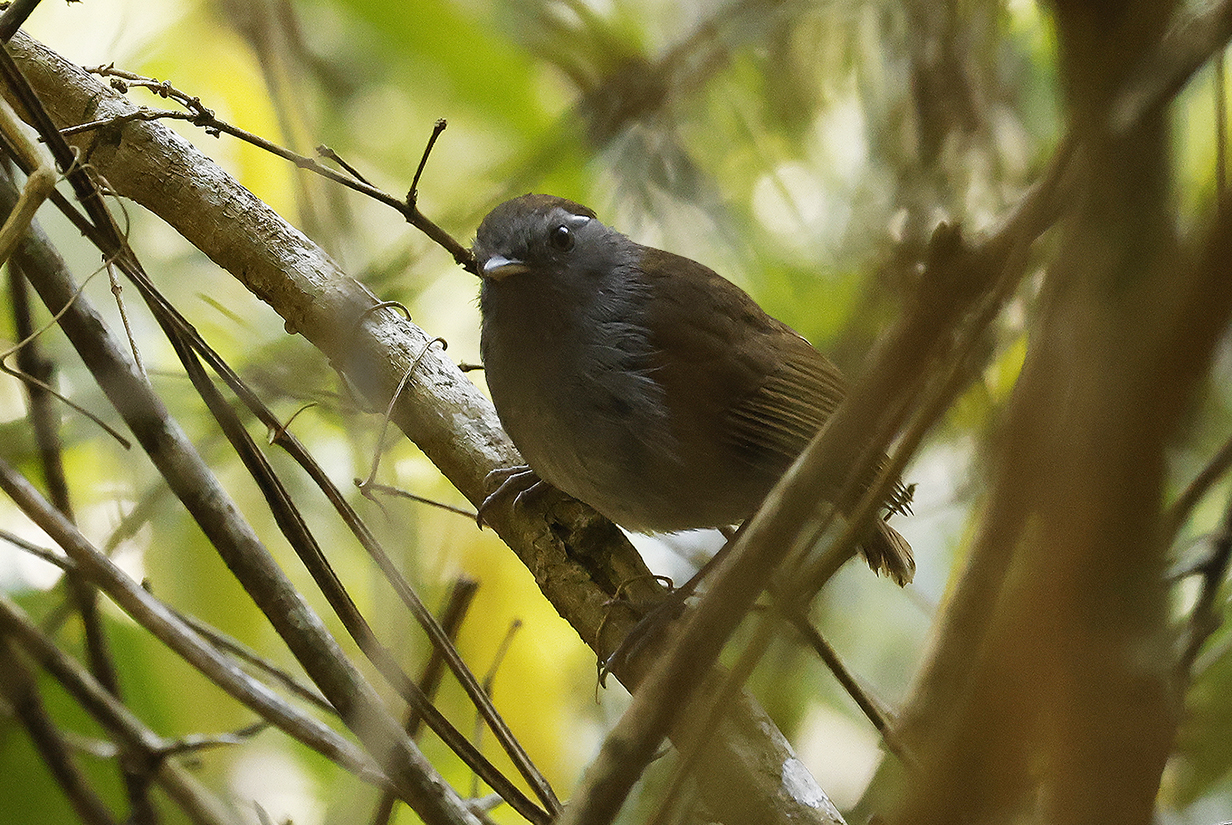
Slaty gnateater (Another difficult skulker and John's life bird)
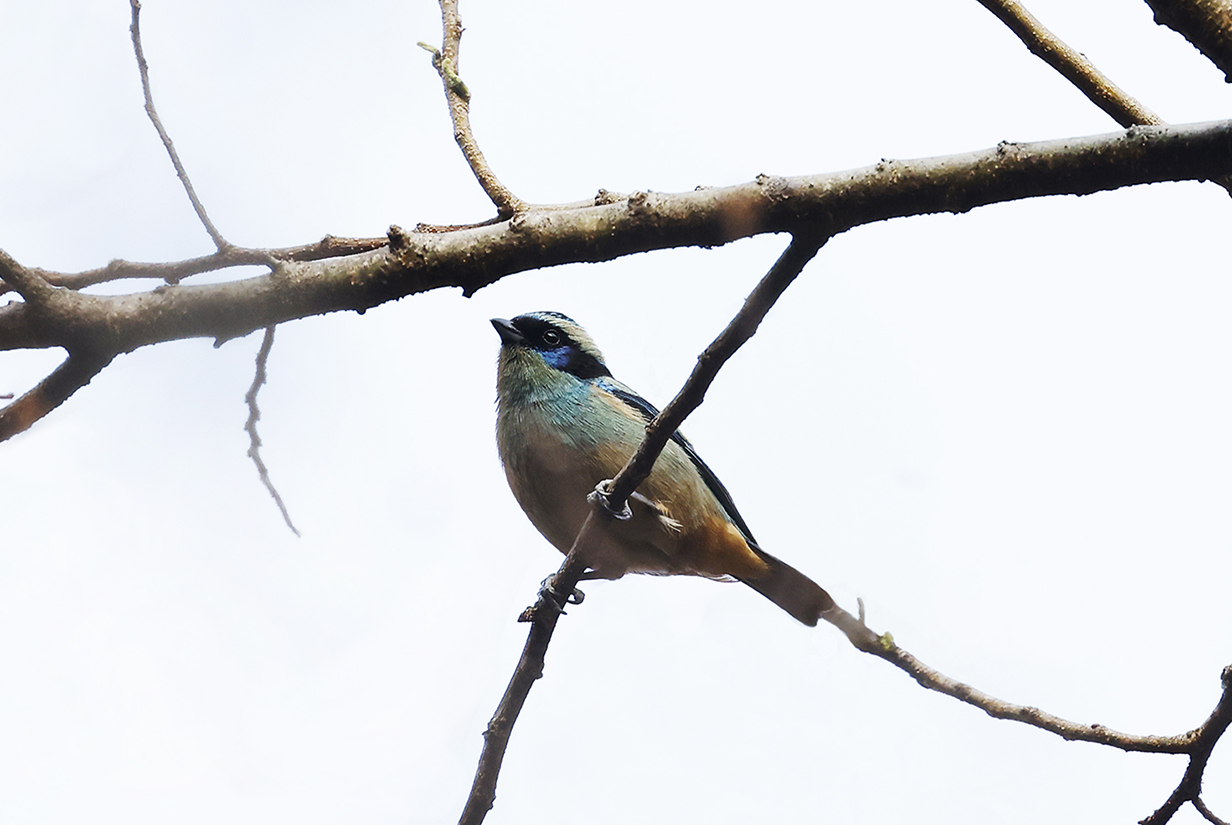
Blue-browed tanager (Rare and surprising here: John had seen it before, but this is Mary's life bird.)
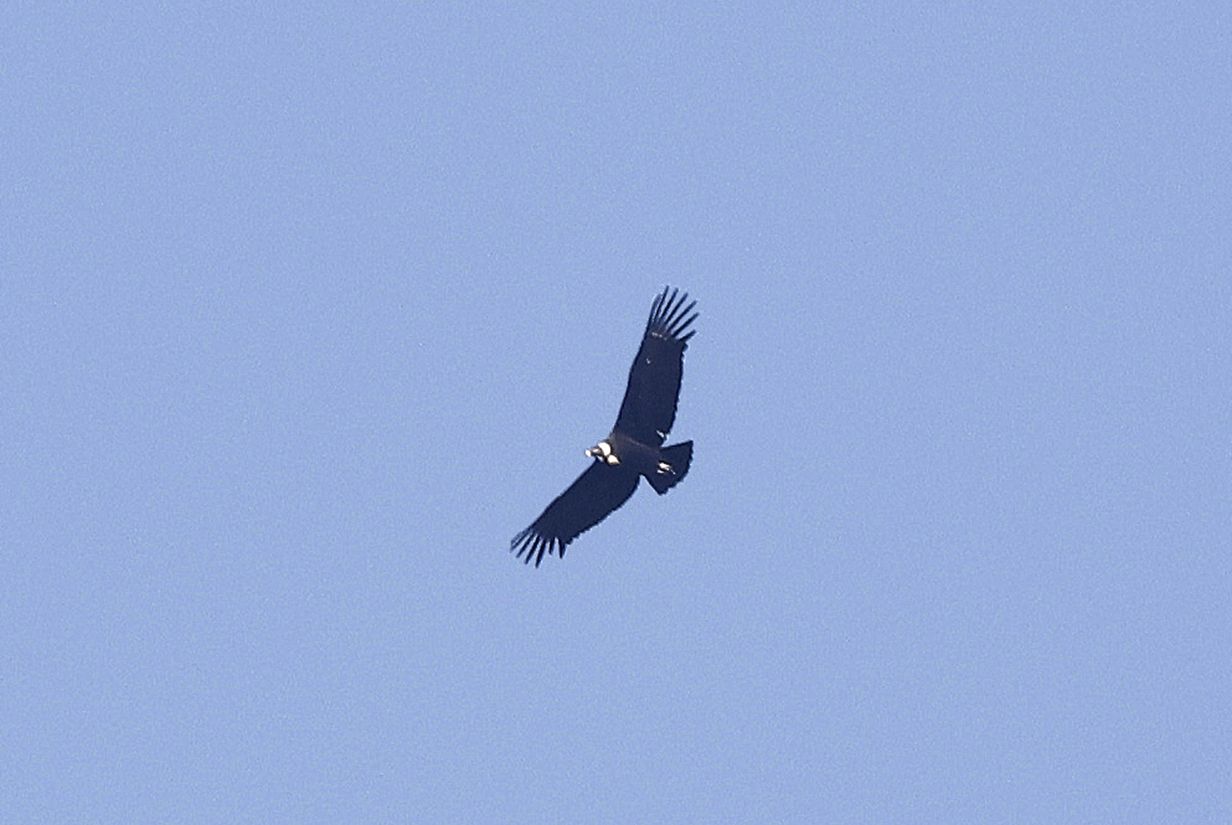
Andean condor (This -- curiously enough -- is our life bird. John saw Andean condor much better from Cerro Tololo Inter-American Observatory in the late 1970s but decided not to "take" the bird until he saw it officially as a "birder". OK, so on September 6, 2022 (day 3 of the Bolivia trip), we got this definitive but highly unsatisfying look ... and then we never saw one again, despite spending lots of time much higher up in the Andes. Nevertheless, we both took this as our life bird. We hope to see it better in a future trip.
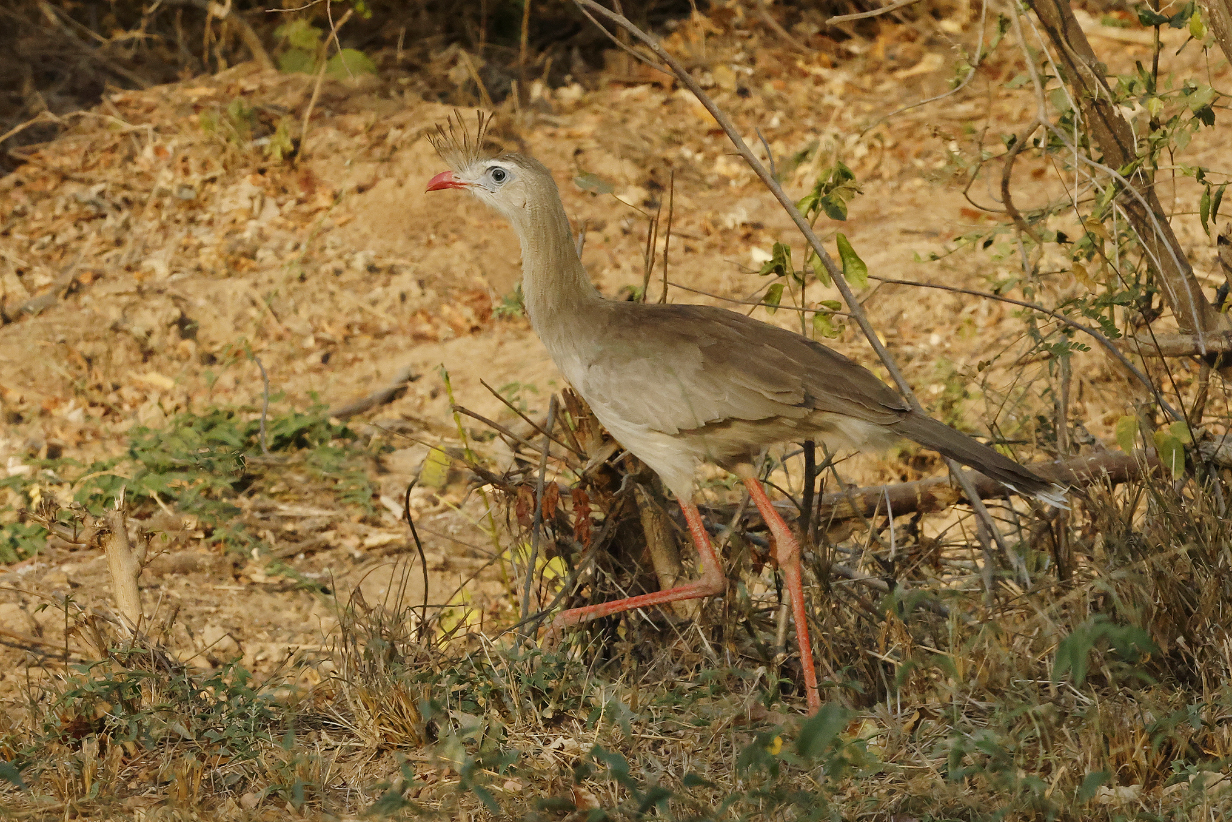
Red-legged seriema (This photo was taken through the window of our bus -- not ideal.)
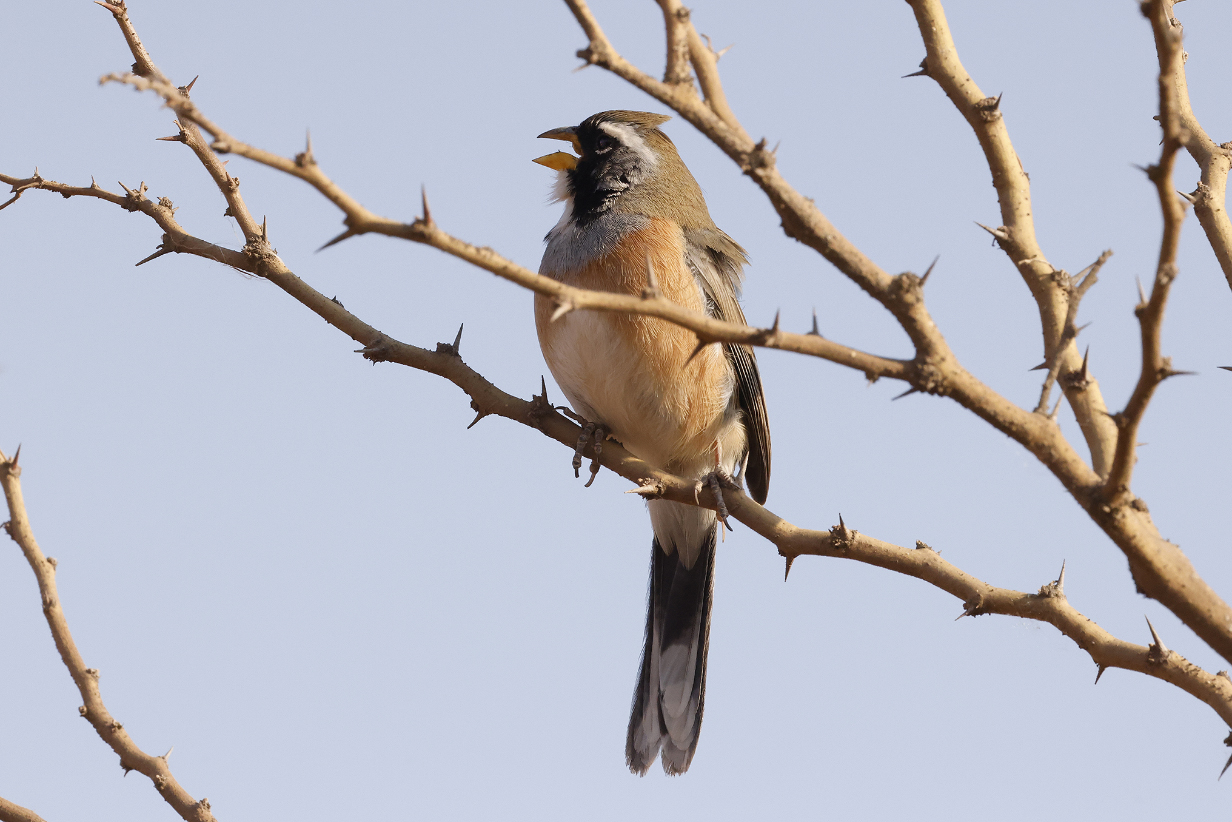
Golden-billed saltator (I think that this is a juvenile bird -- his beak is yellow, not orange. A picture of an adult follows later.)
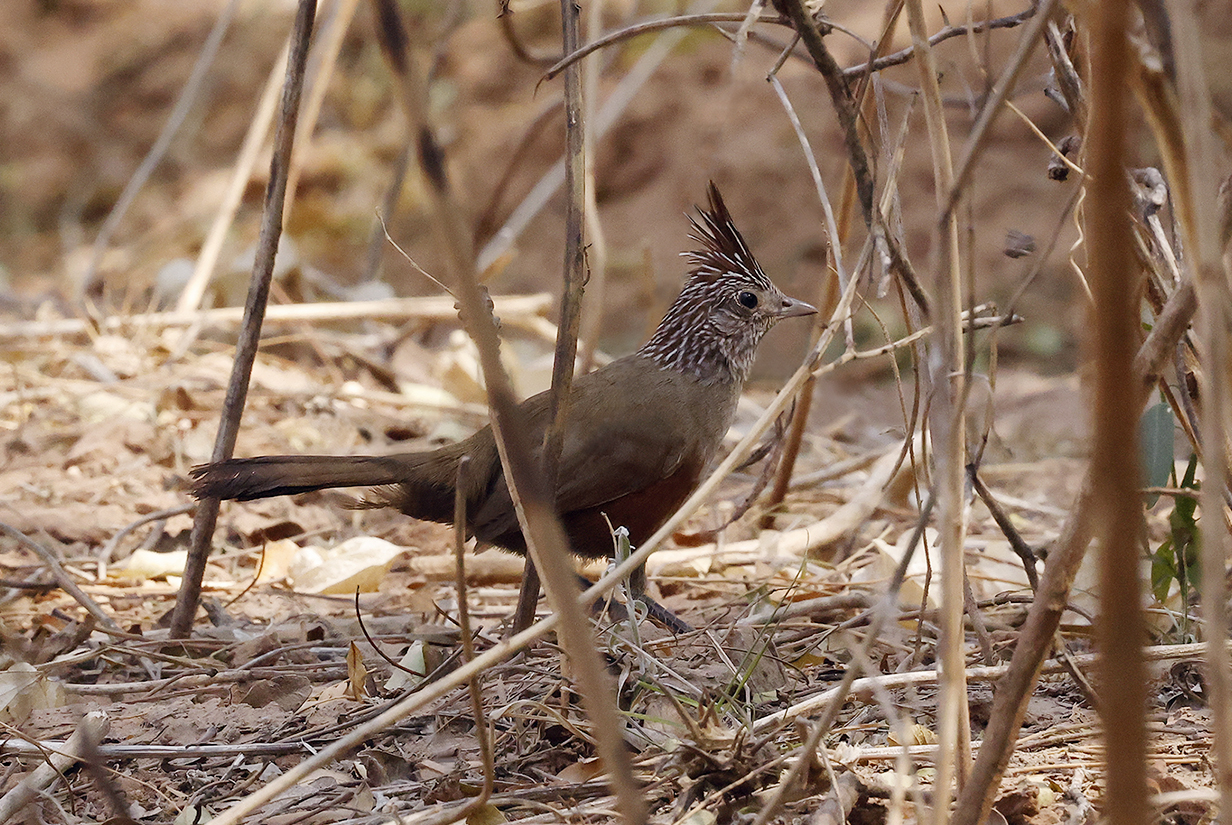
Crested gallito (One of the great birds of the dry Chaco ... but a skulker. This is our life bird.)
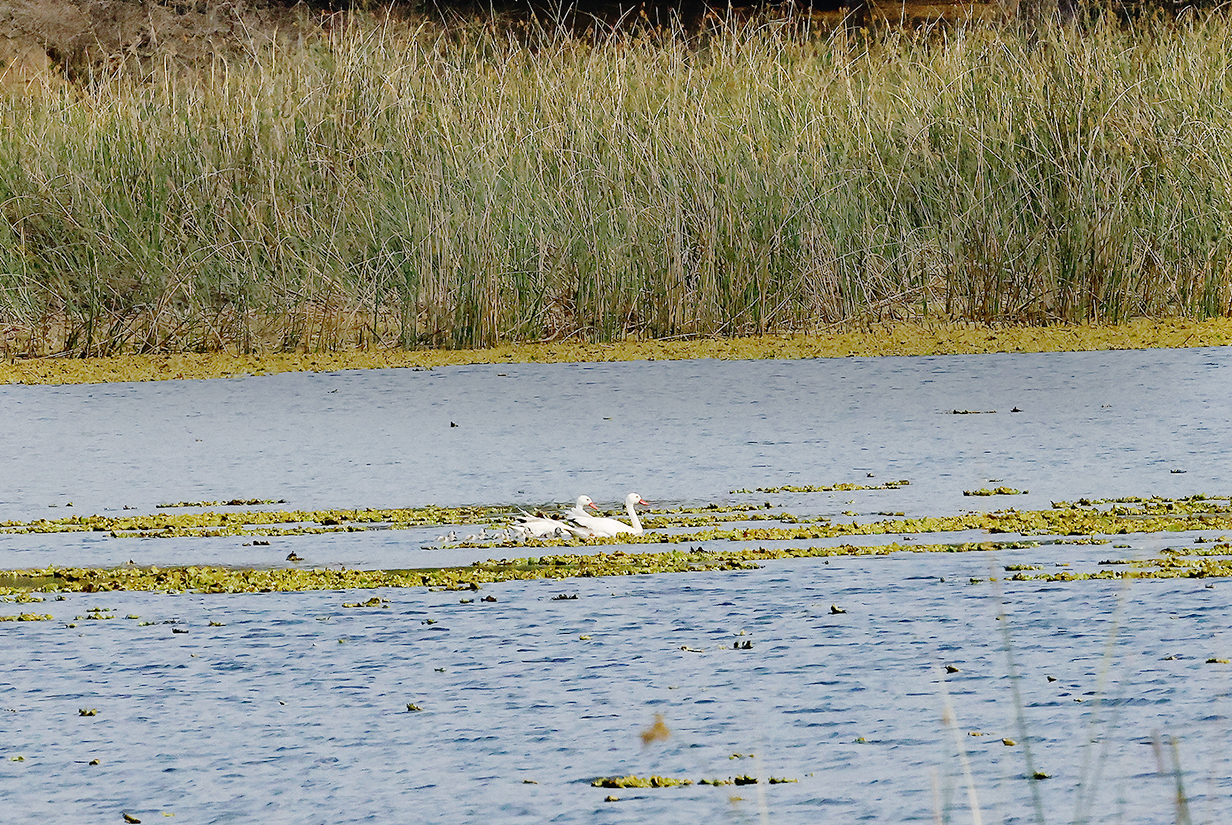
Coscoroba swan (Seeing them was a surprise, so near the north edge of their range. With with 5 chicks, too. These are our life birds.)
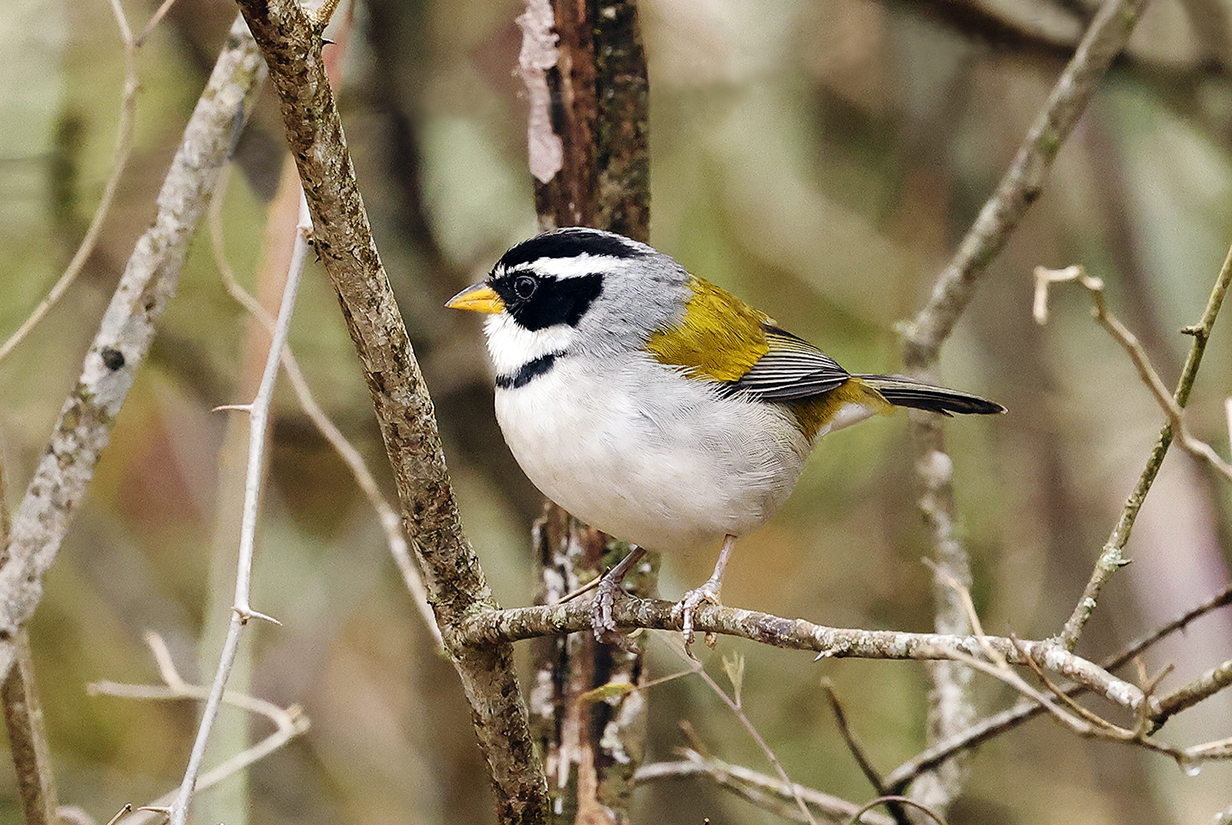
Moss-backed sparrow (This is John's life bird.)

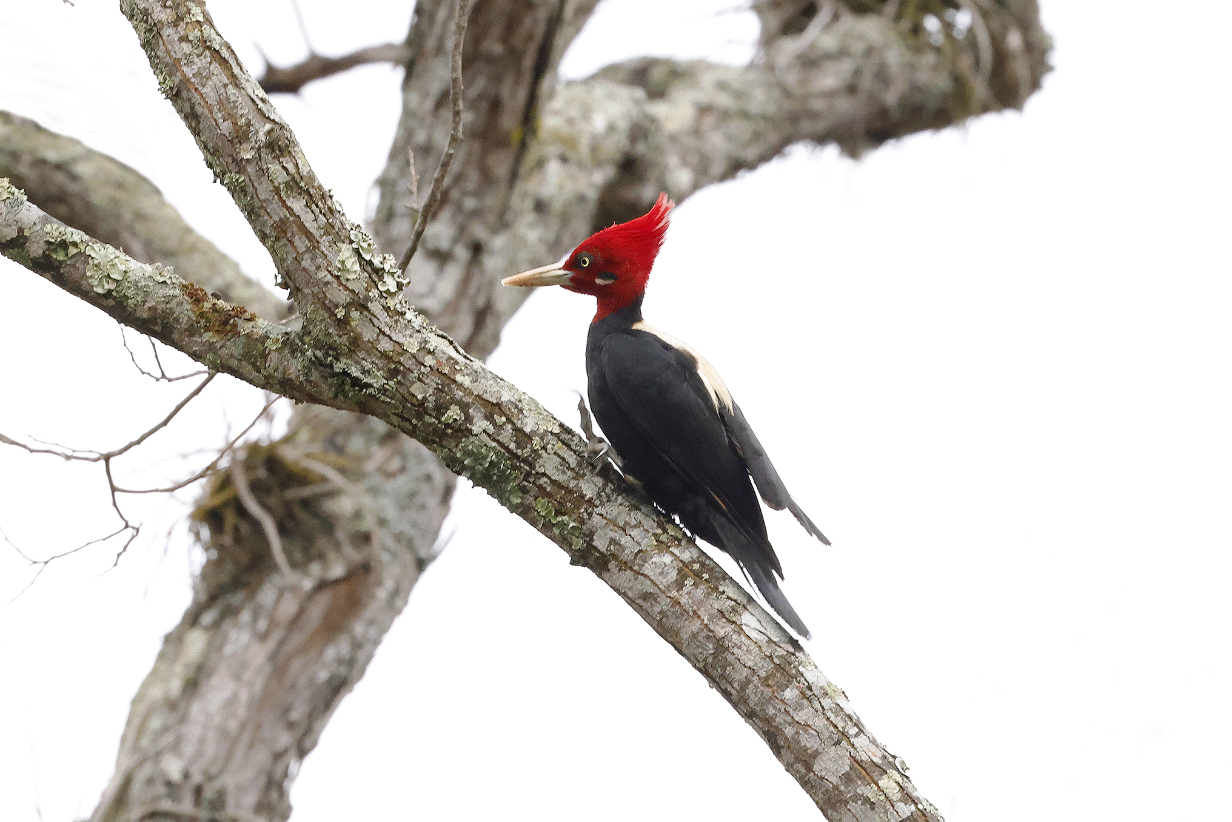
Cream-backed woodpecker (This is John's life bird.)

Planalto hermit (This is our life bird.)
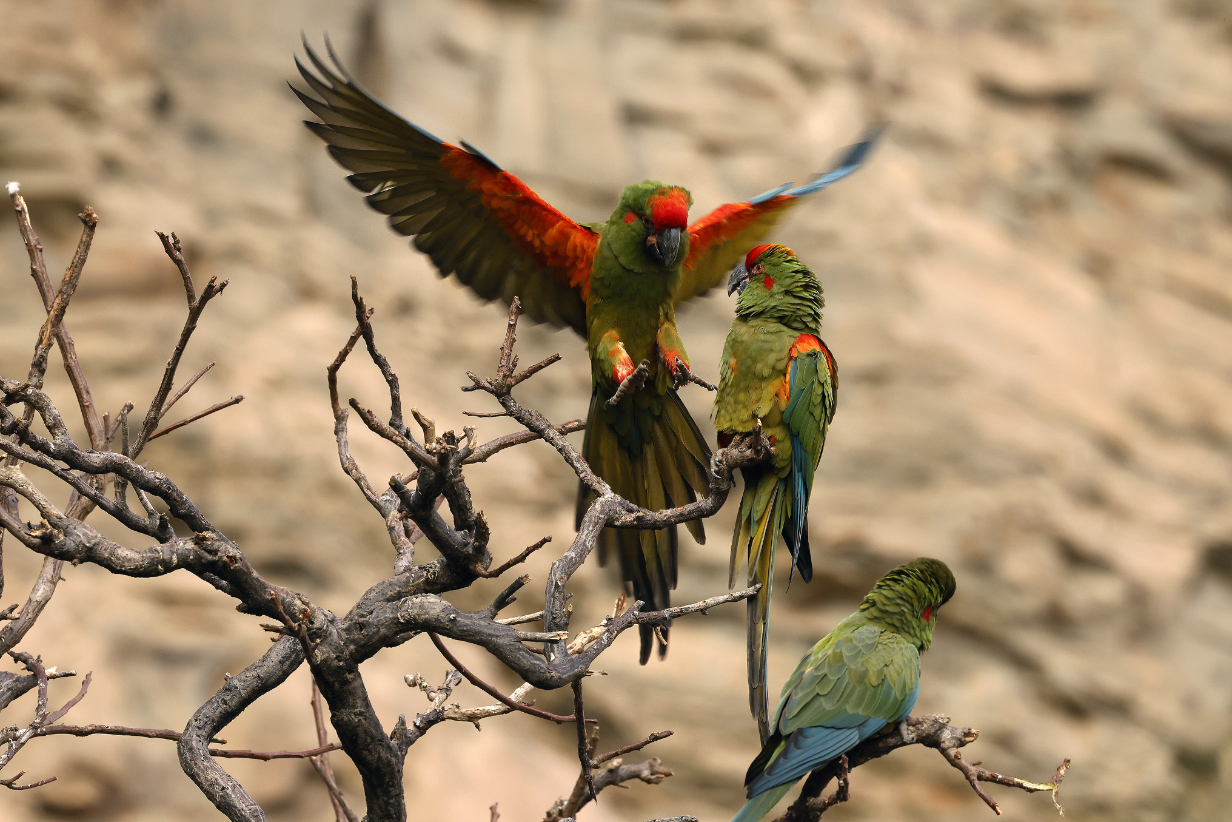
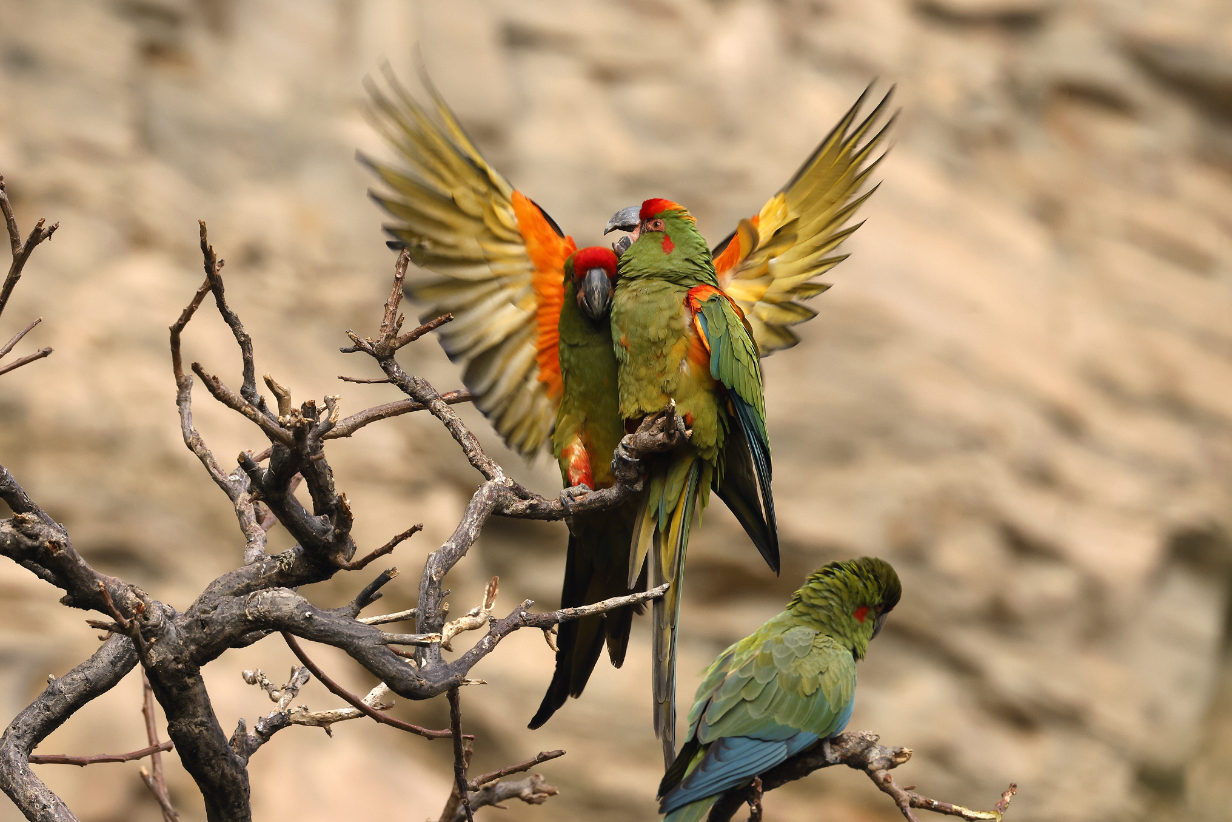
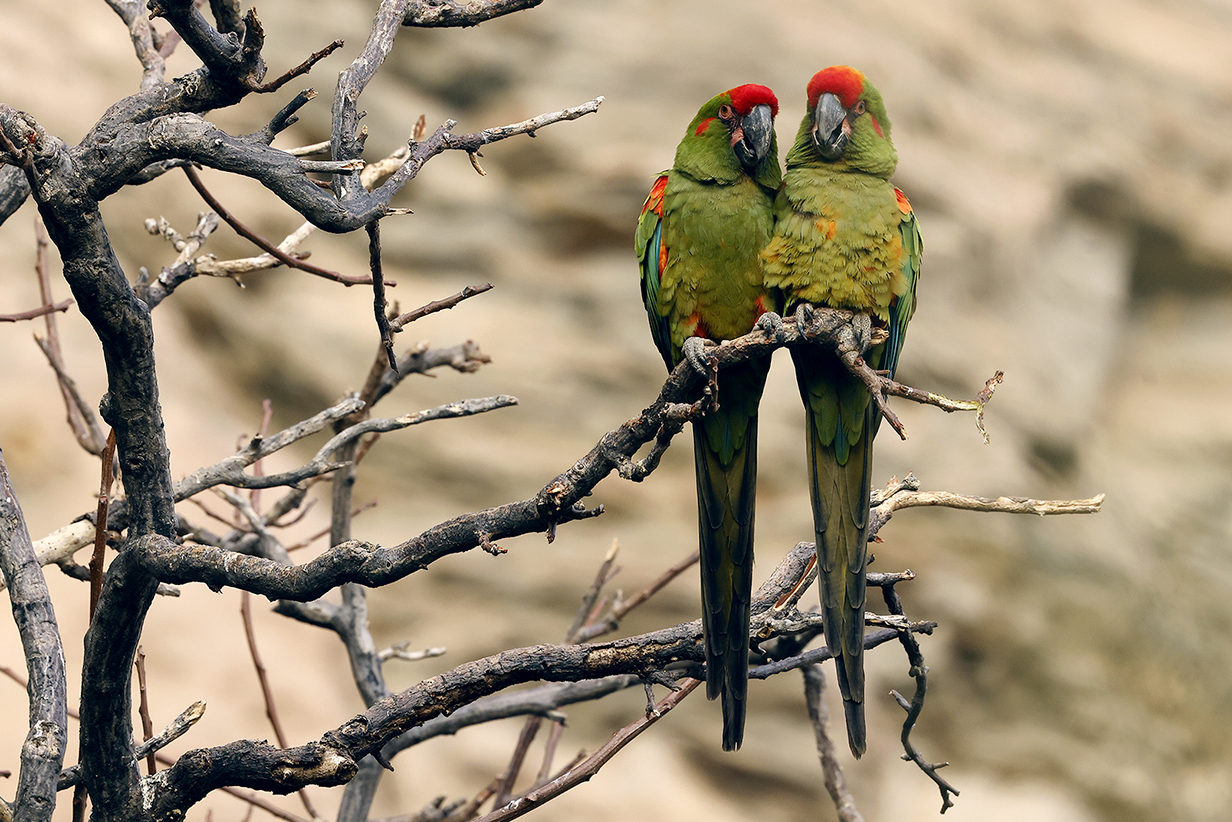
Red-fronted macaw at a protected lodge near Semaipata
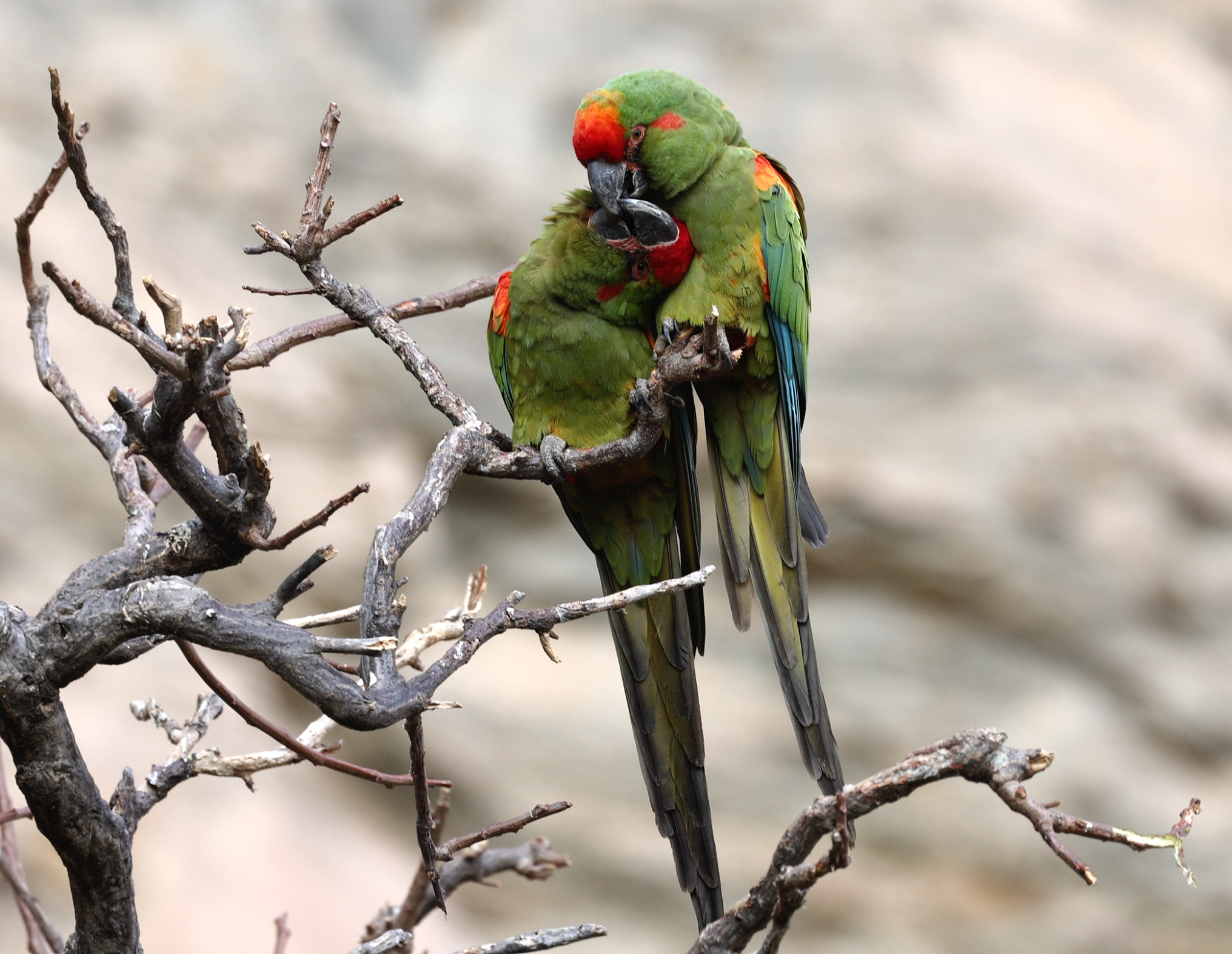
Red-fronted macaws are very affectionate (86 Mb movie) (Sorry: no tripod)
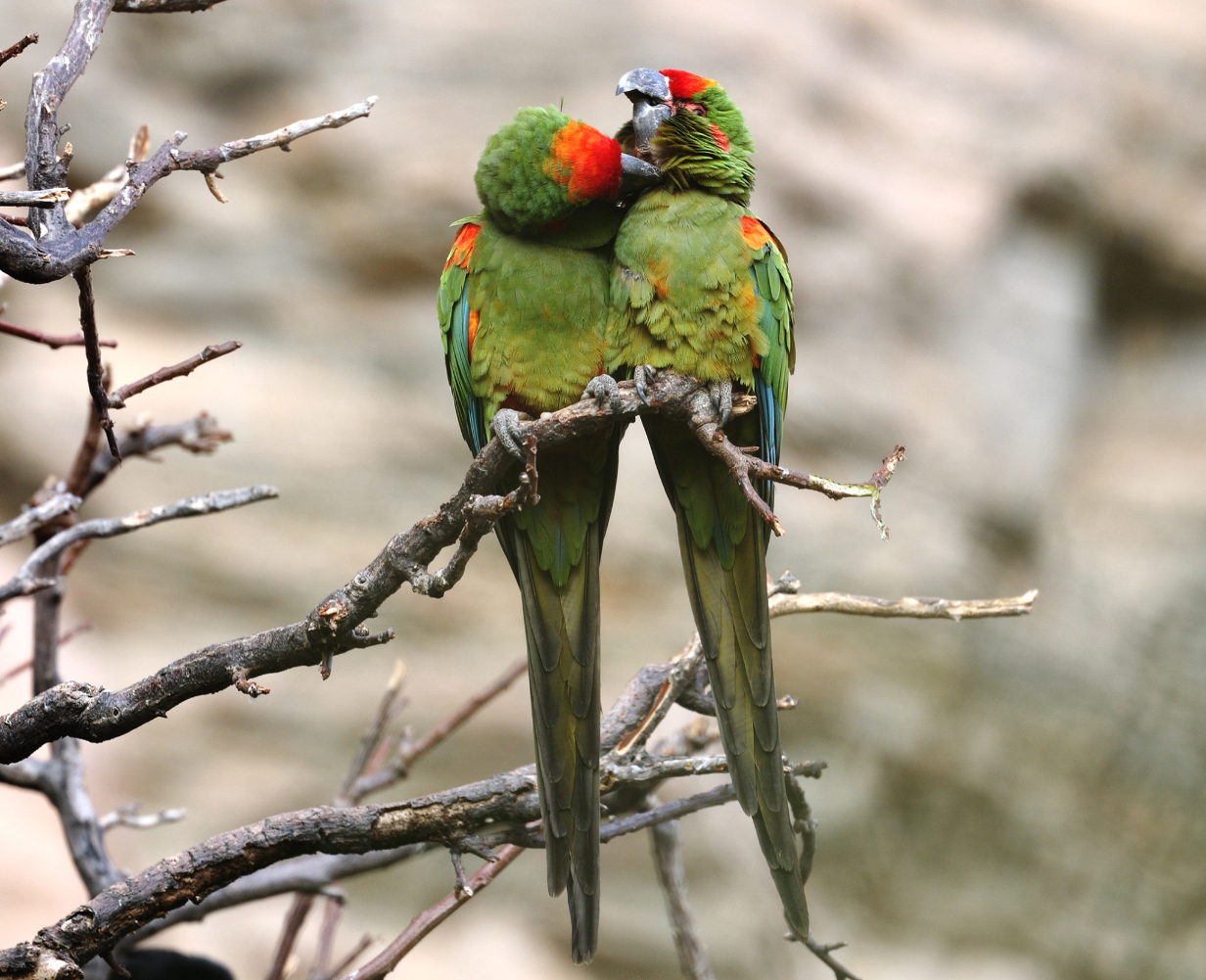
Was a rare pleasure to witness the private lives of the macaws. This 32 Mb movie shows mutual grooming.
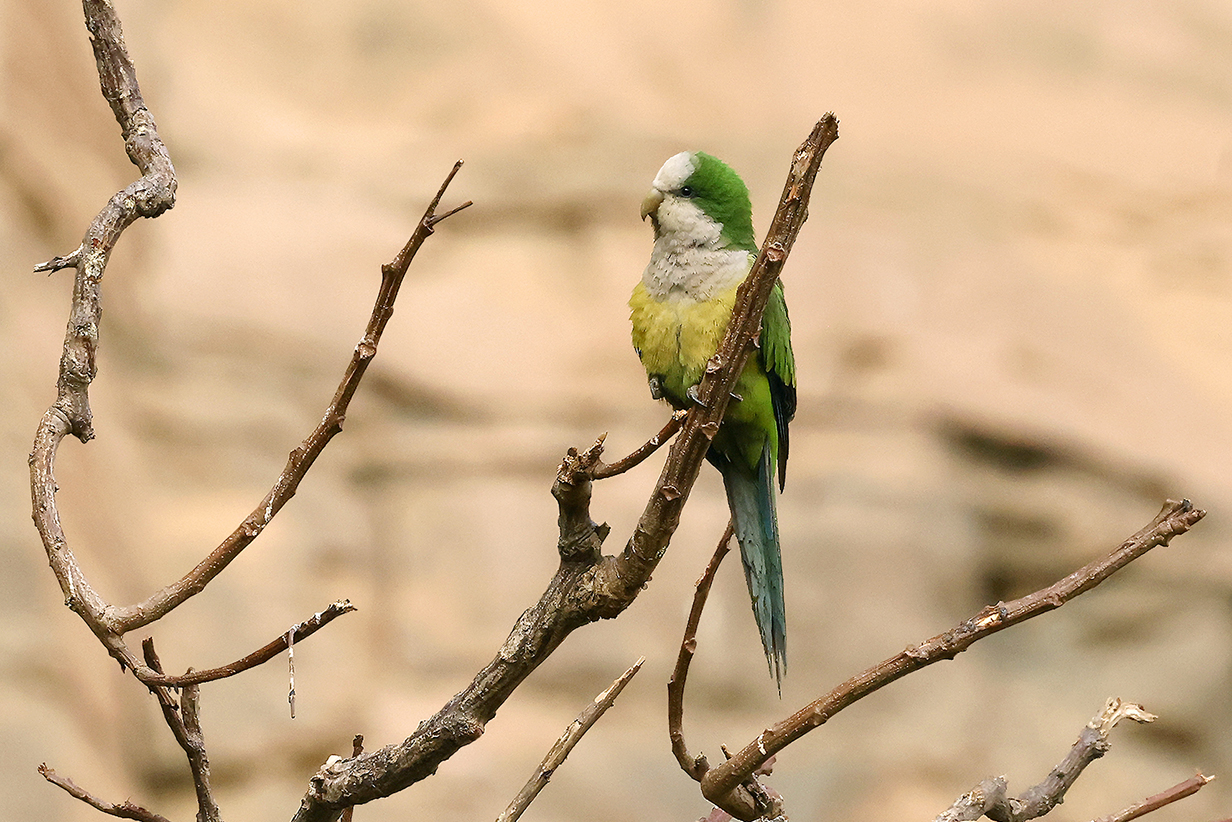
Cliff parakeet subspecies of Monk parakeet (Myiopsitta monachus luchsi)

Cliff parakeets nest colonially along the cliff walls around the Red-fronted macaw sanctuary.

Mitred parakeets share the Cliff parakeet colonial nests (These are John' life birds.)

Rufous-faced antpitta (This was our only antpitta of the trip, in cloud forest in the highlands. We tried for it often. I got only one, perhaps one-second look, as it ran across this open spot in the dense undergrowth. This is John's life bird.)


Mountain wren was not new but sang and displayed beautifully.
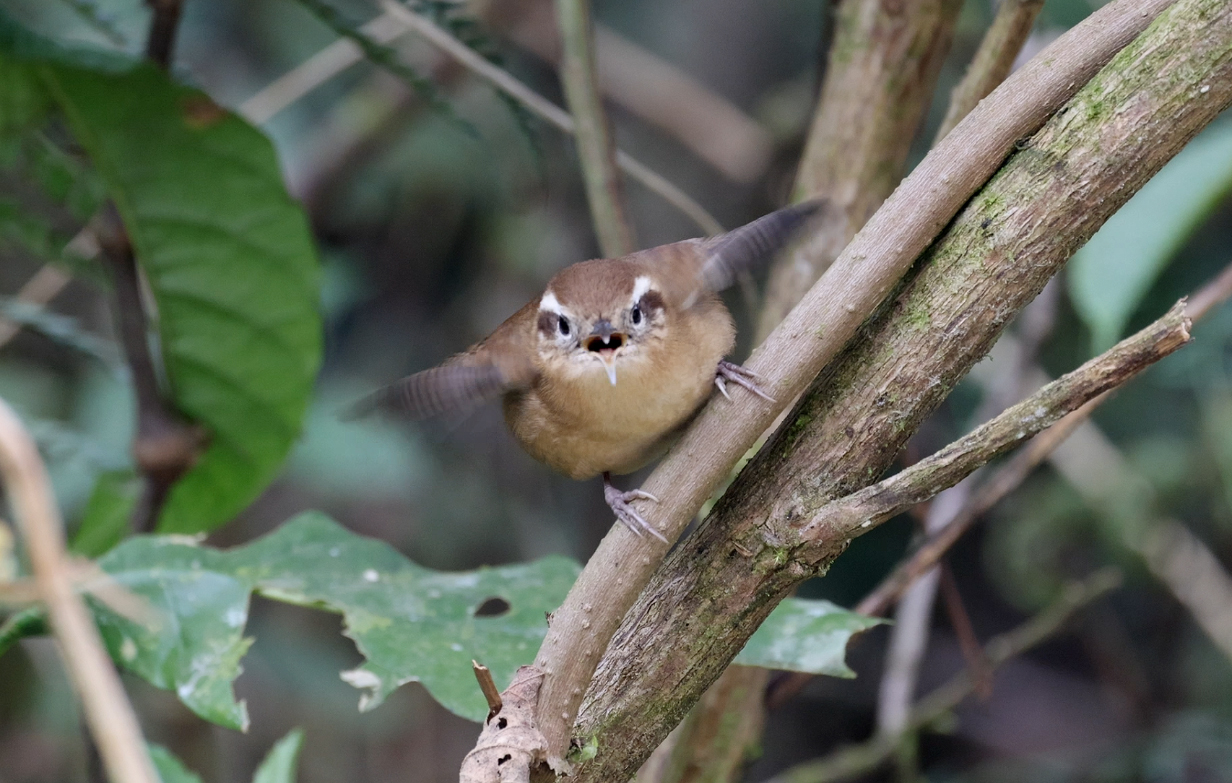
Here's a 9-second 32 Mb movie of the wren displaying.
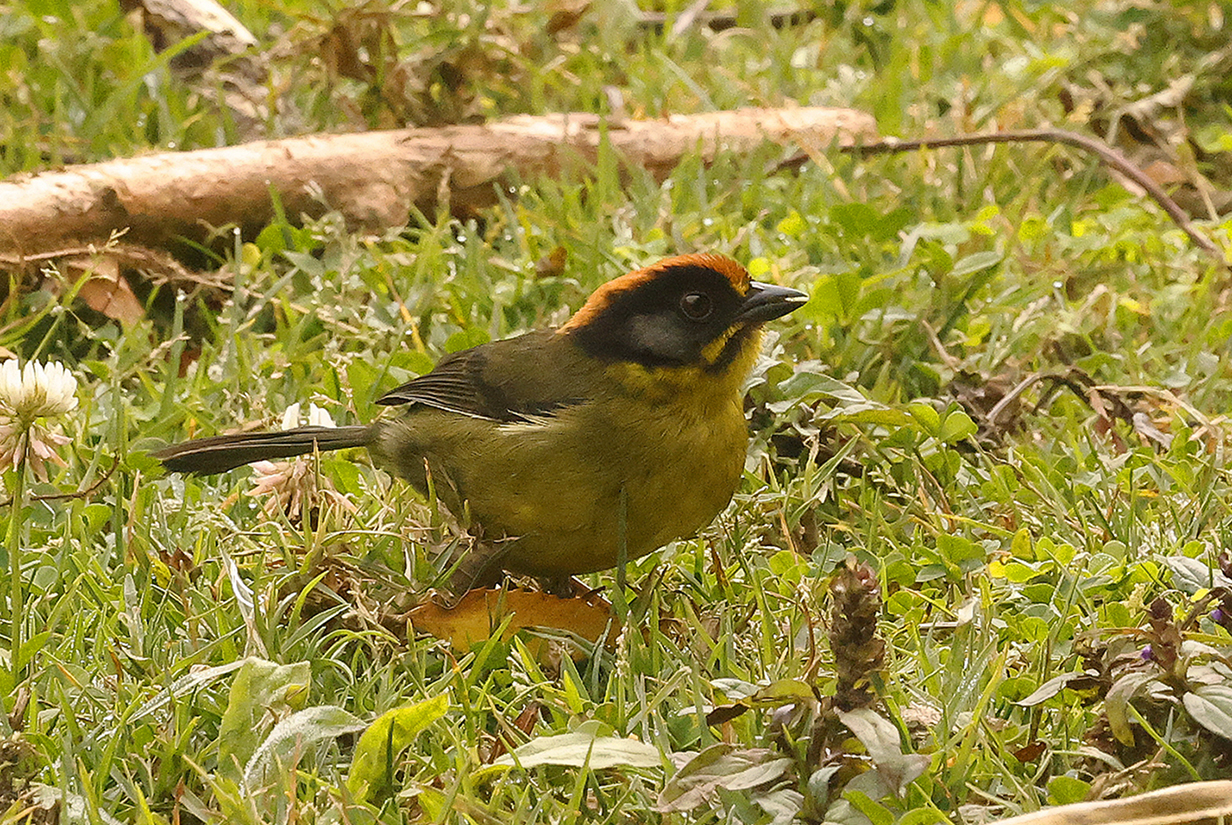
Bolivian brushfinch (This is our life bird.)
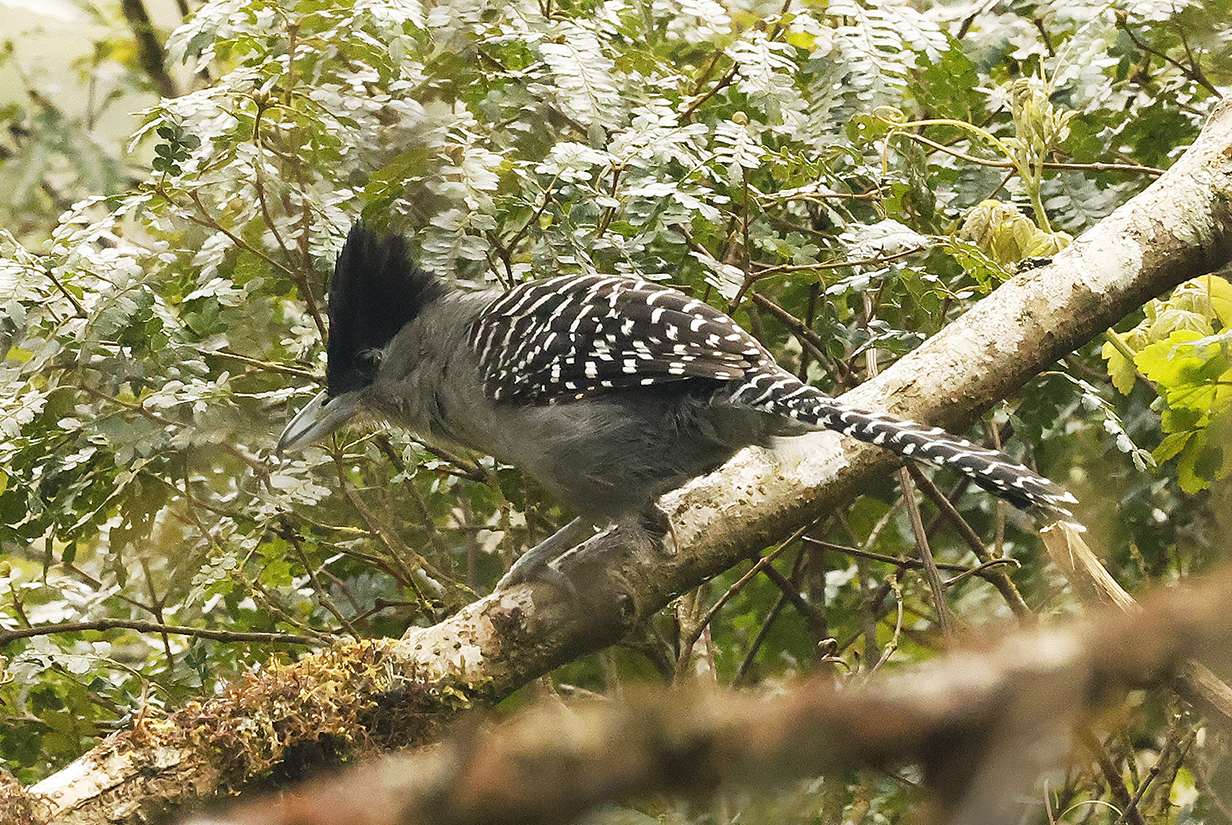

Giant antshrike (This is our life bird.)

Light-crowned spinetail (This is John's life bird.)
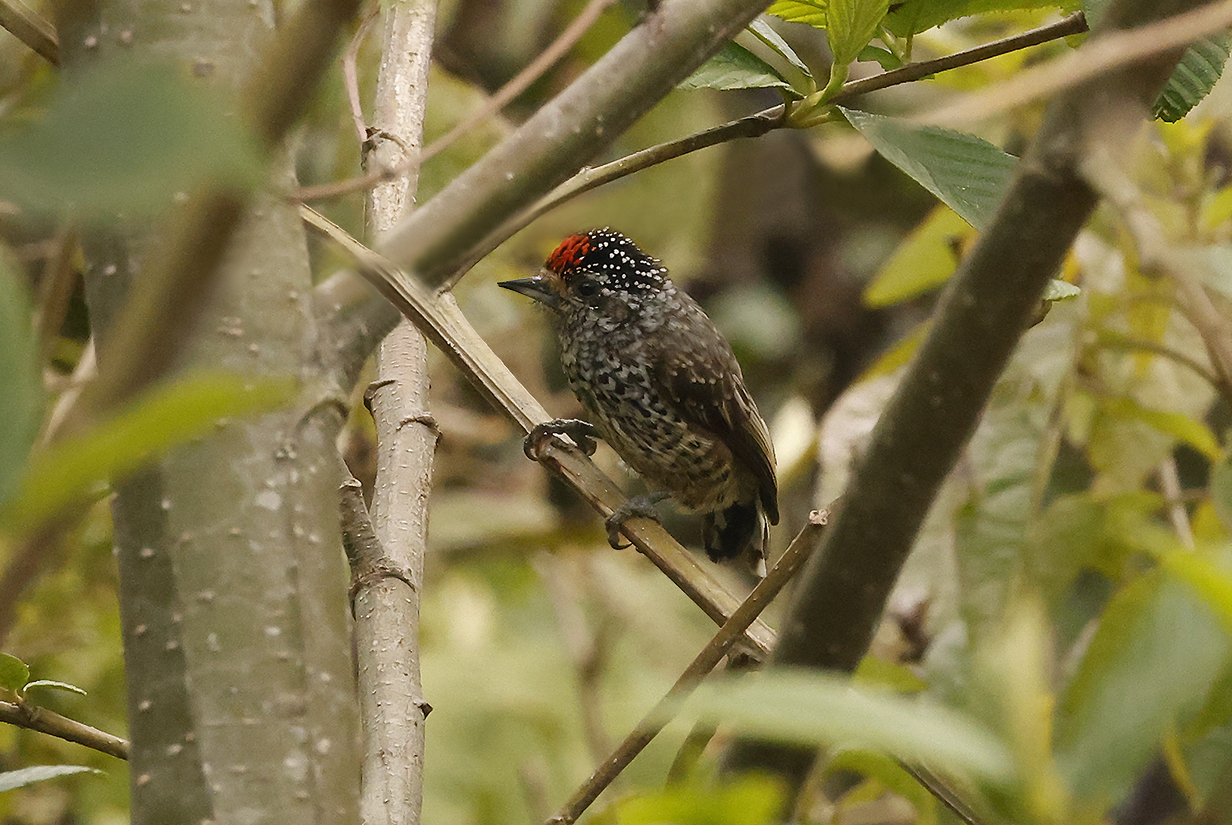
Ocellated piculet (This male is John's life bird.)
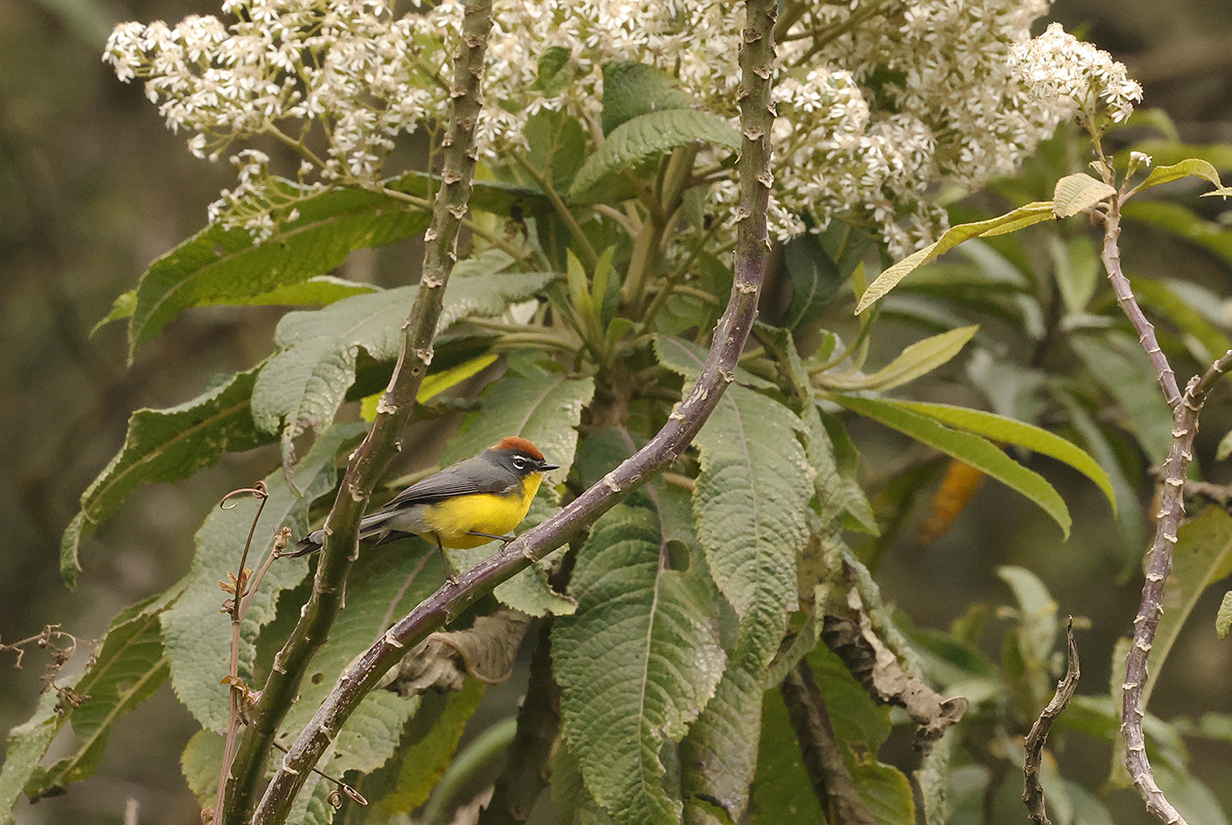
Brown-capped redstart
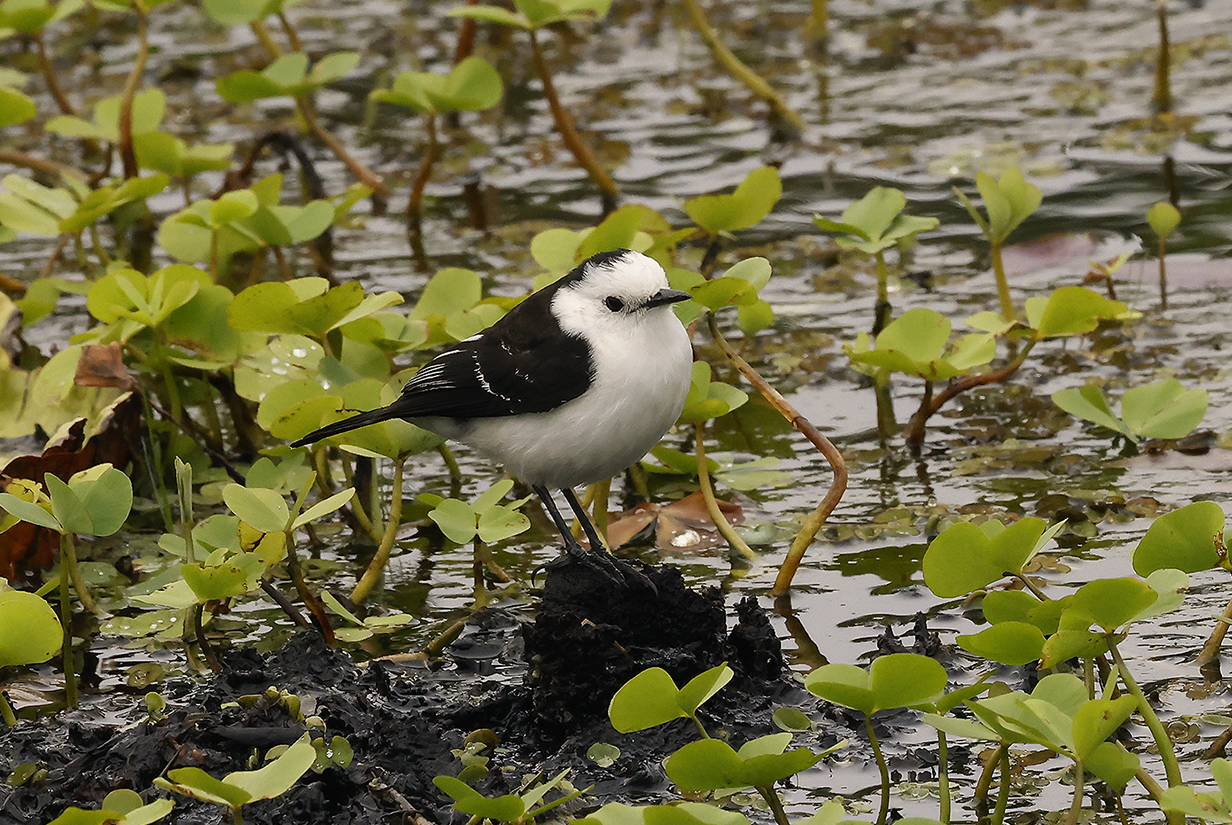
Black-backed water-tyrant
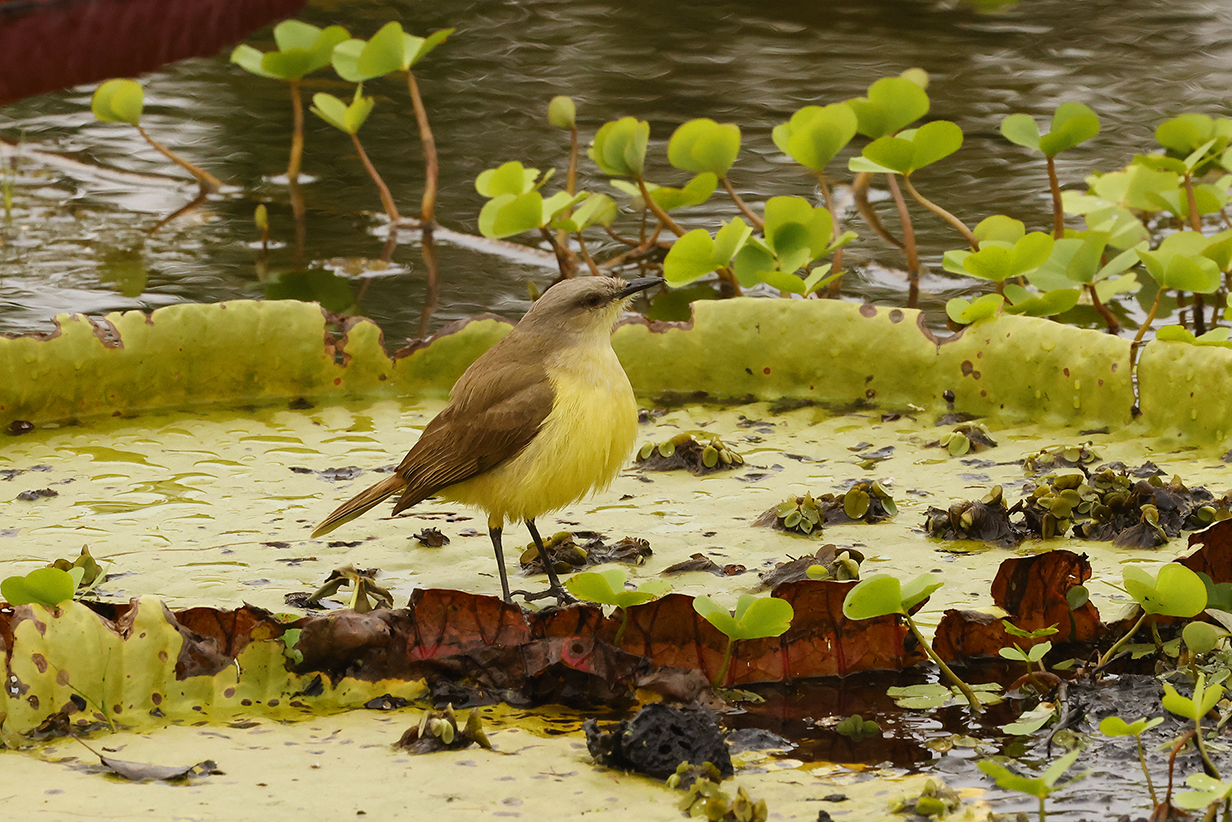
Cattle tyrant

Hudson's black-tyrant (Rare! This is John's life bird.)
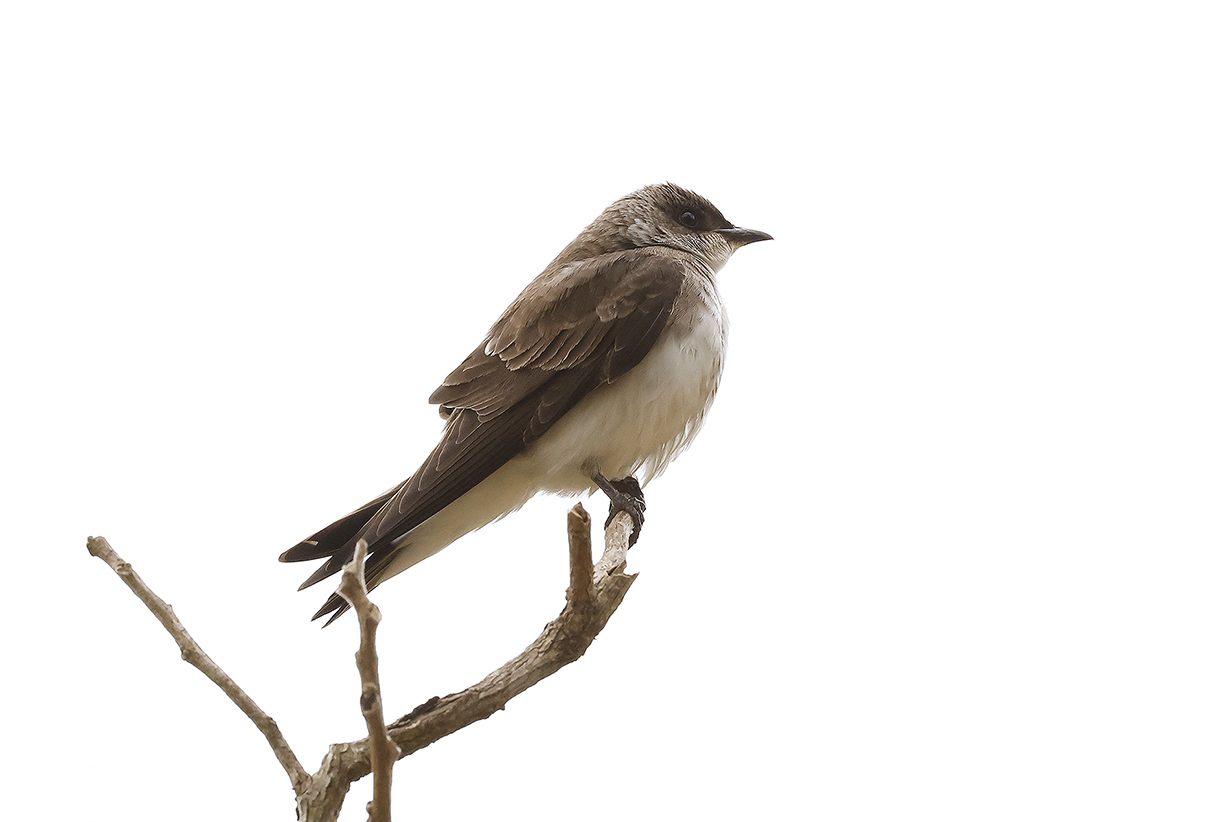
Brown-chested martin

Blue-throated macaw (These are our life birds.)

Blue-throated macaw

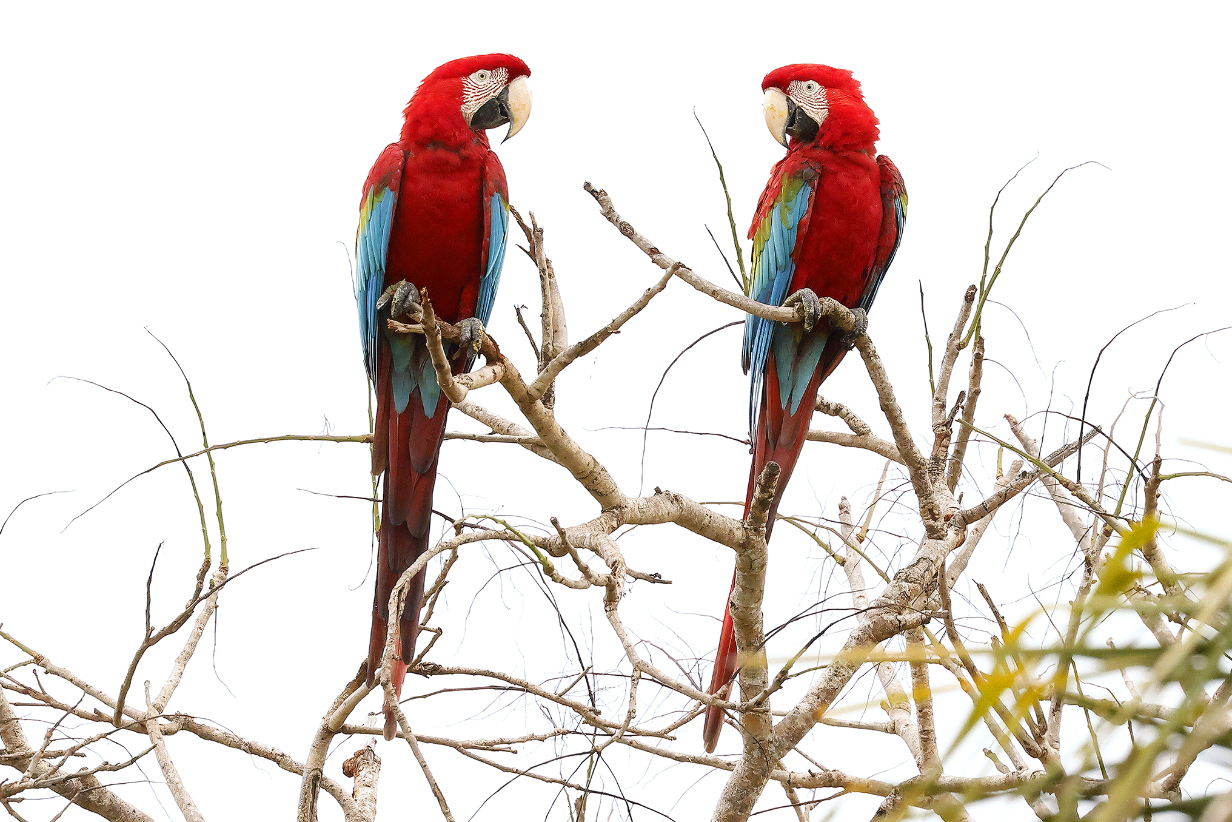
Red-and-green macaw (also at Fazenda Loreto, with Blue-throated macaws)
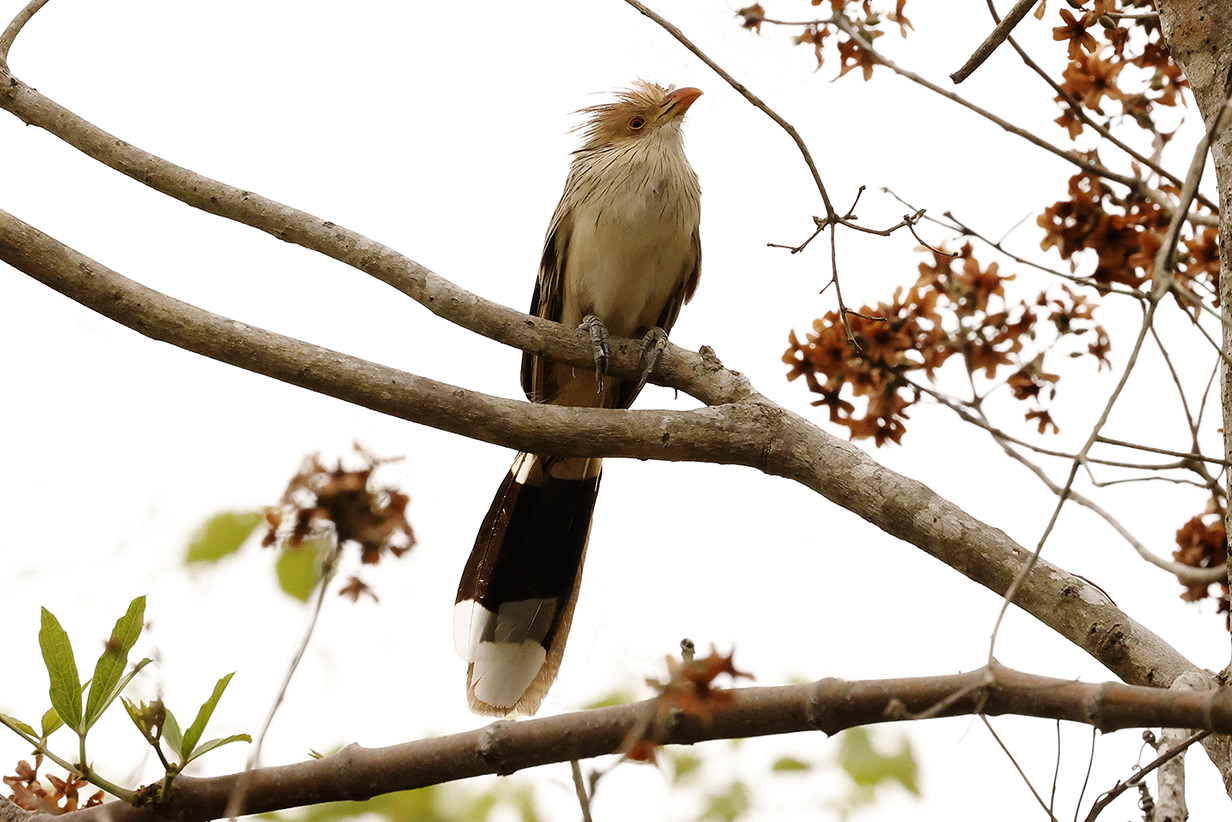
Guira cuckoo

Crimson-crested woodpecker (female)
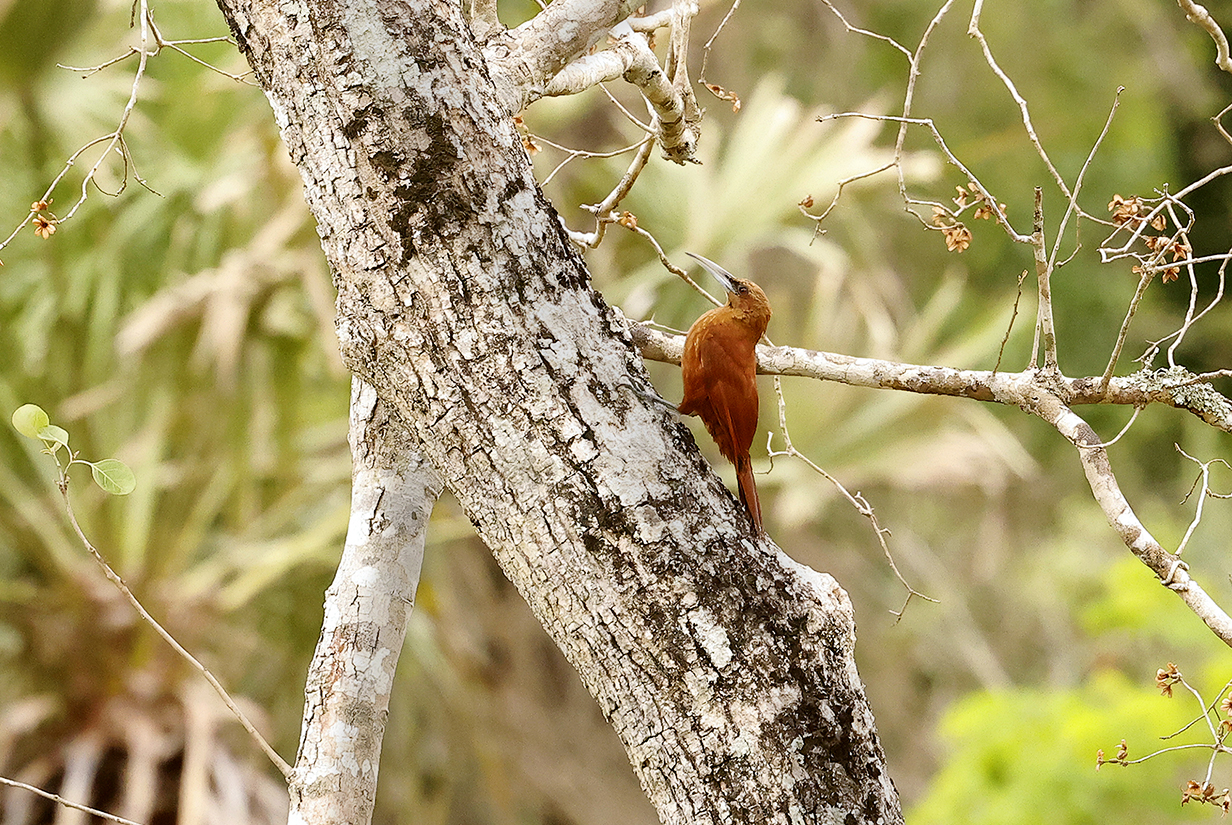
Great rufous woodcreeper
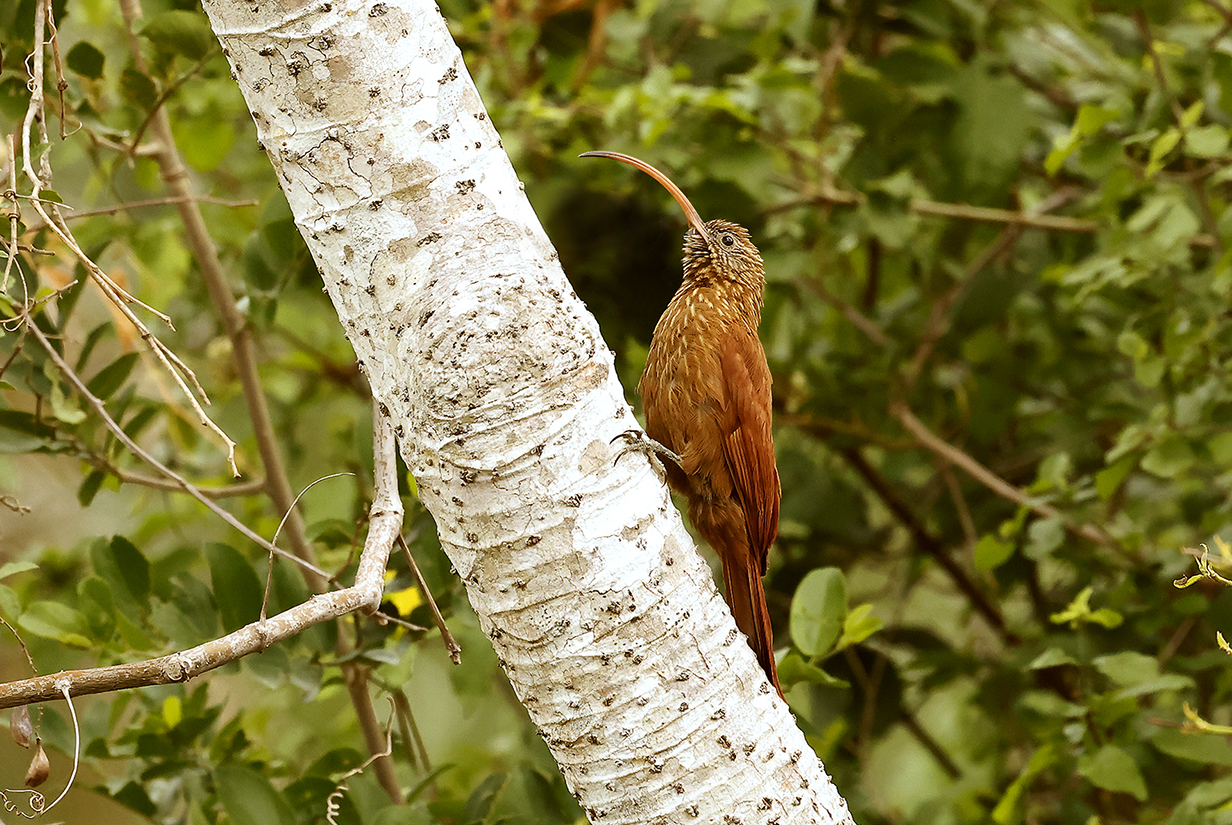
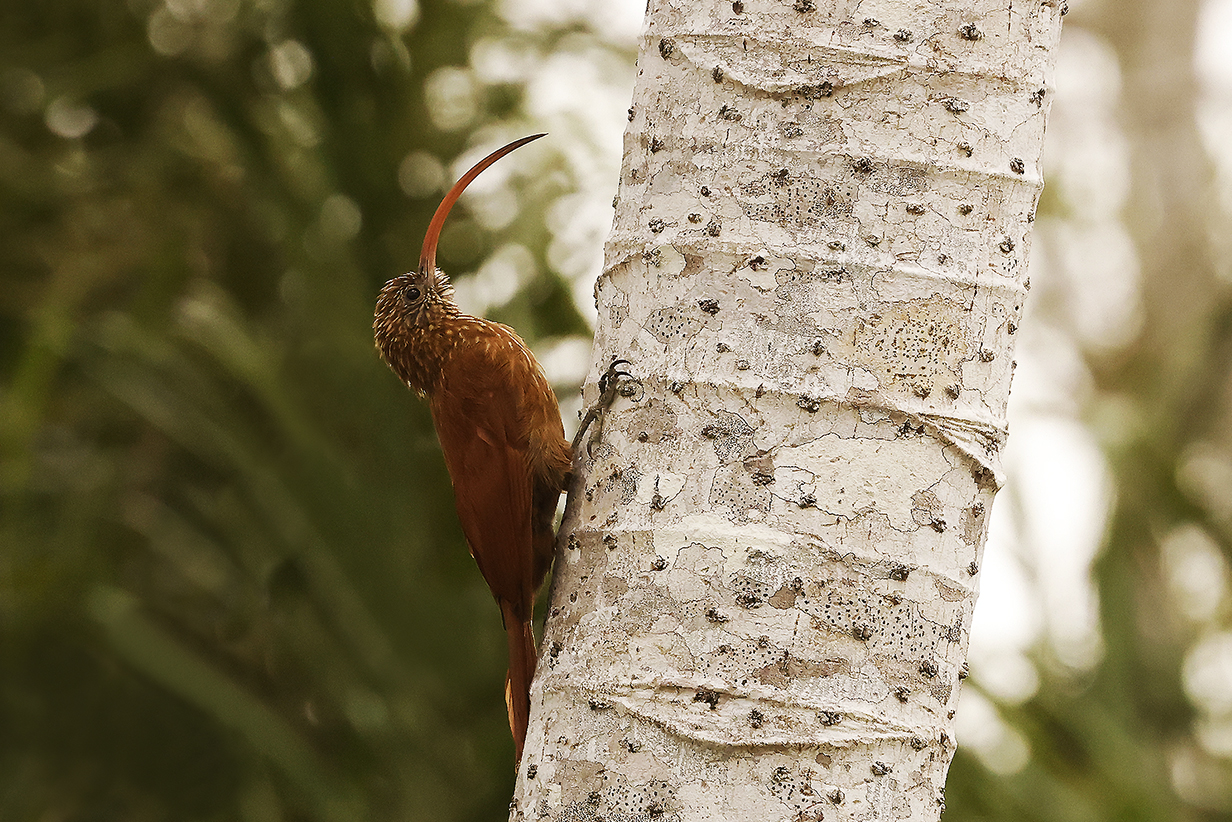
Red-billed scythebill (This was one of John's most important new birds of the trip, but this is not his life bird.)
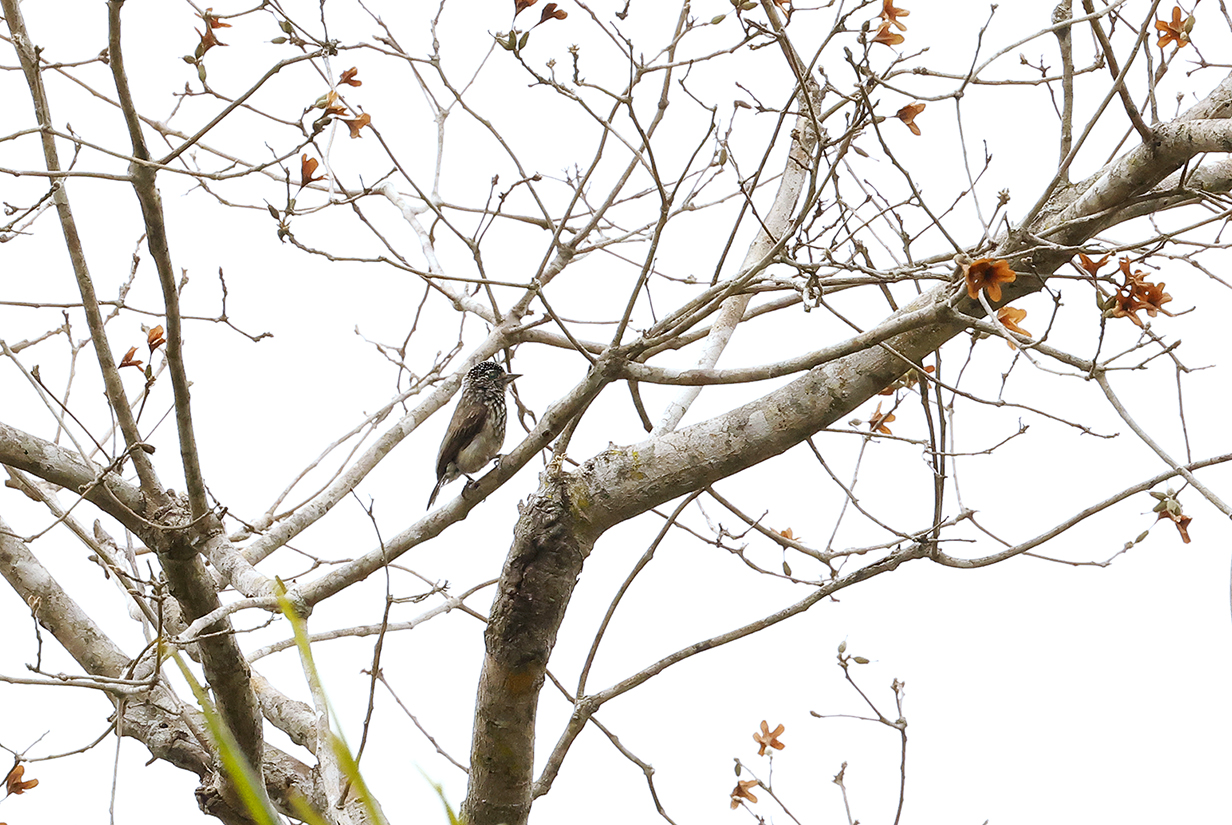
White-wedged piculet (female)

Great horned owl (conveniently roosting in the daytime)


Large-billed seedfinch (Very rare sighting just off the road outside Tapacare resort. These are our life birds.)
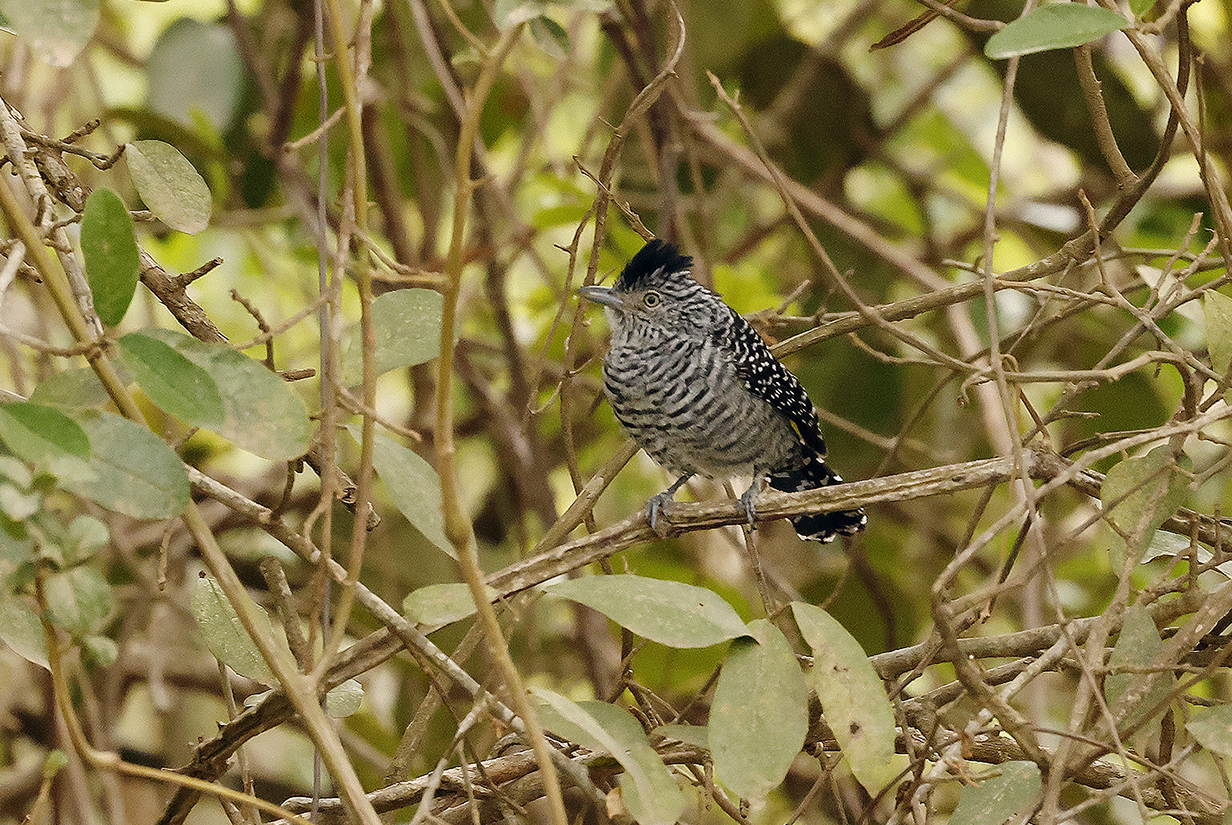
Barred antshrike (male) (Always a favorite)
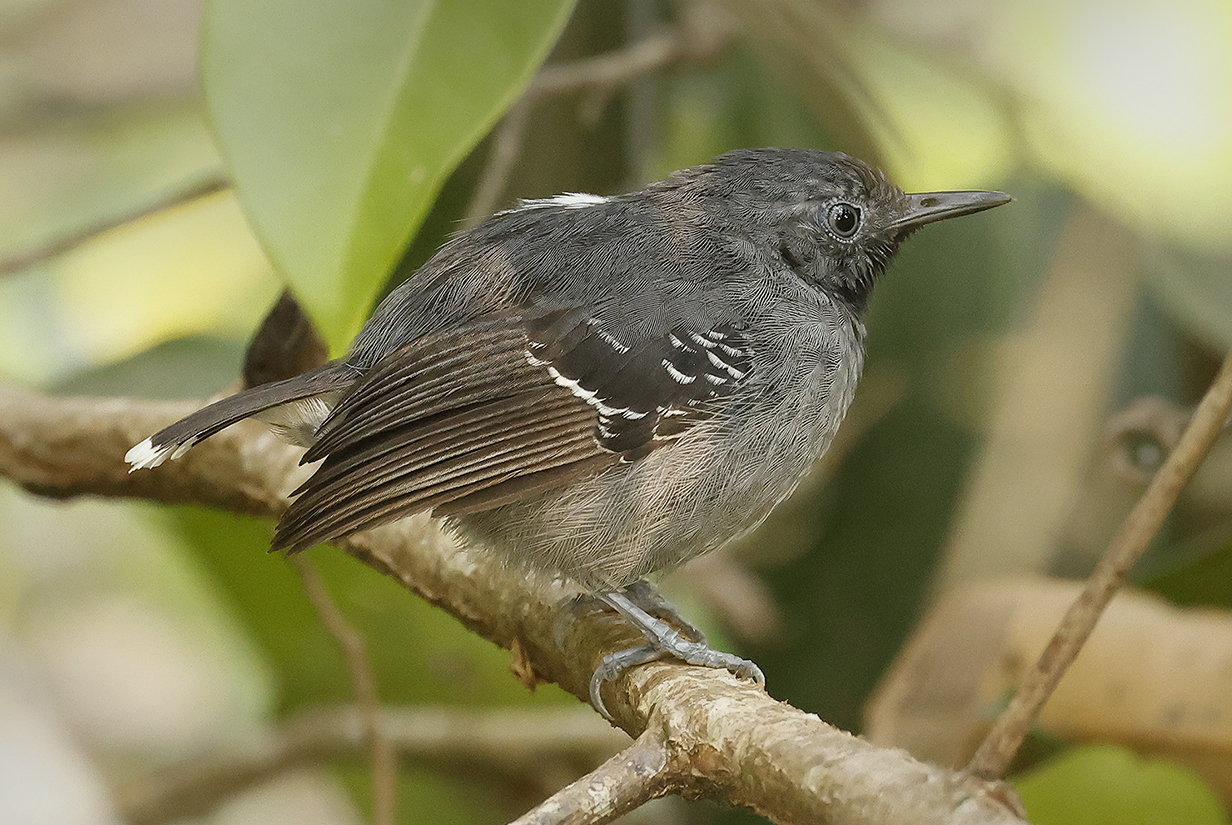
Band-tailed antbird (Yes!!! We saw this bird on the Amazon river cruise in Peru, in December 2022, but we failed completely to get a picture or even a satisfying look. This time, John "lucked out" and found a perfect tunnel through foliage to get this very difficult but much loved skulker.)
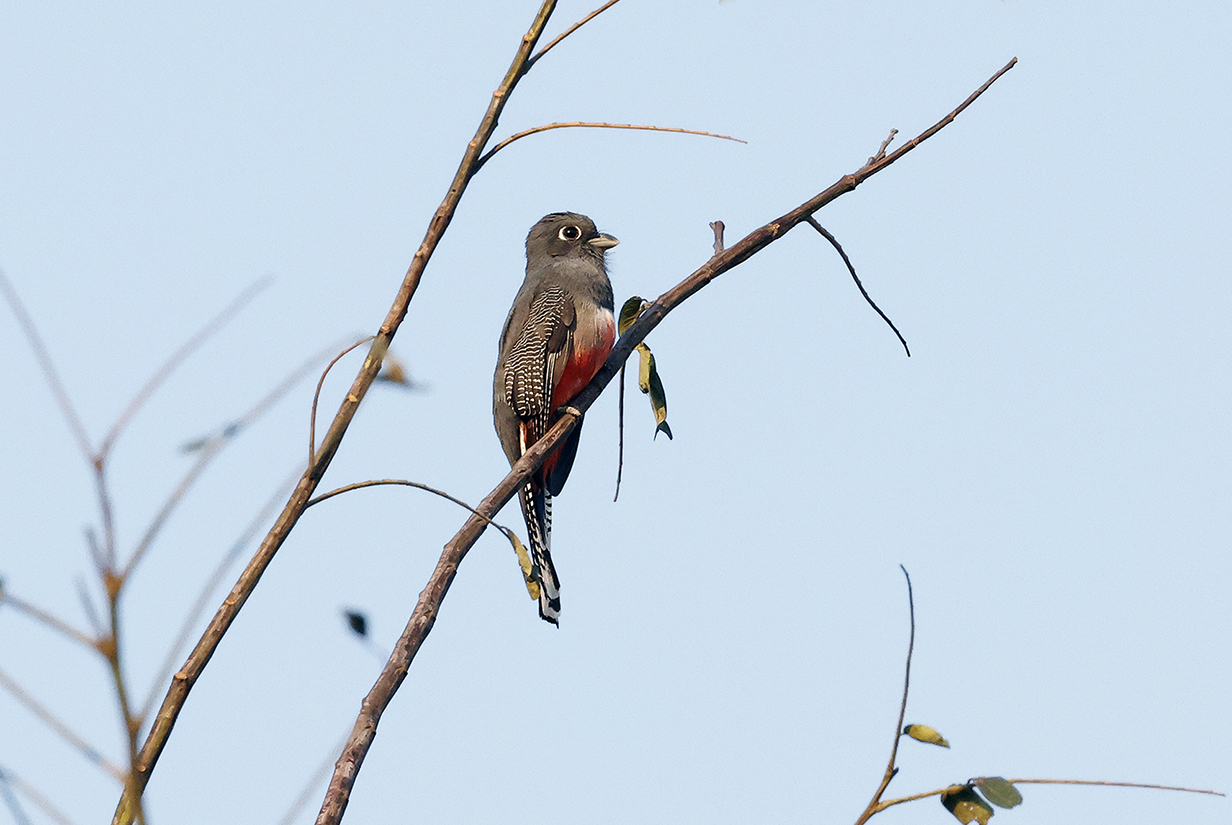
Blue-crowned trogon (female)
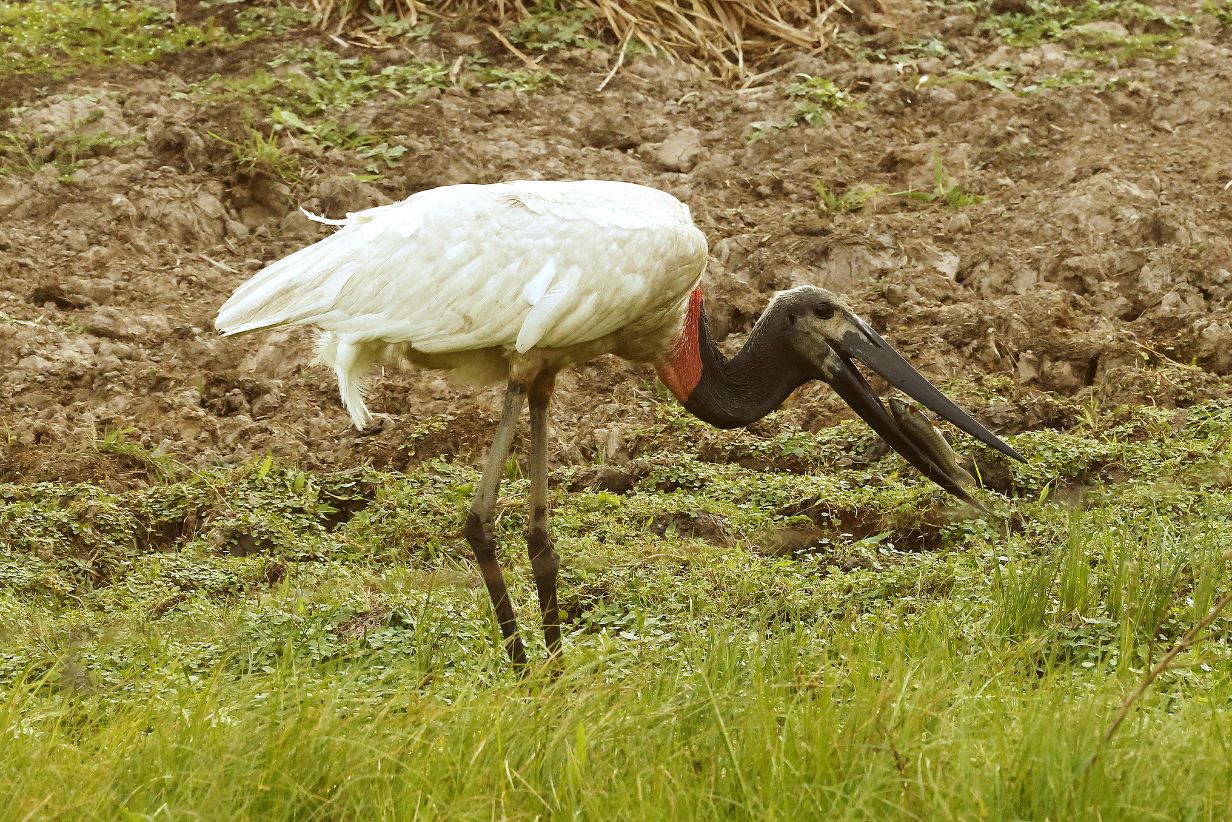
Jabiru with fish
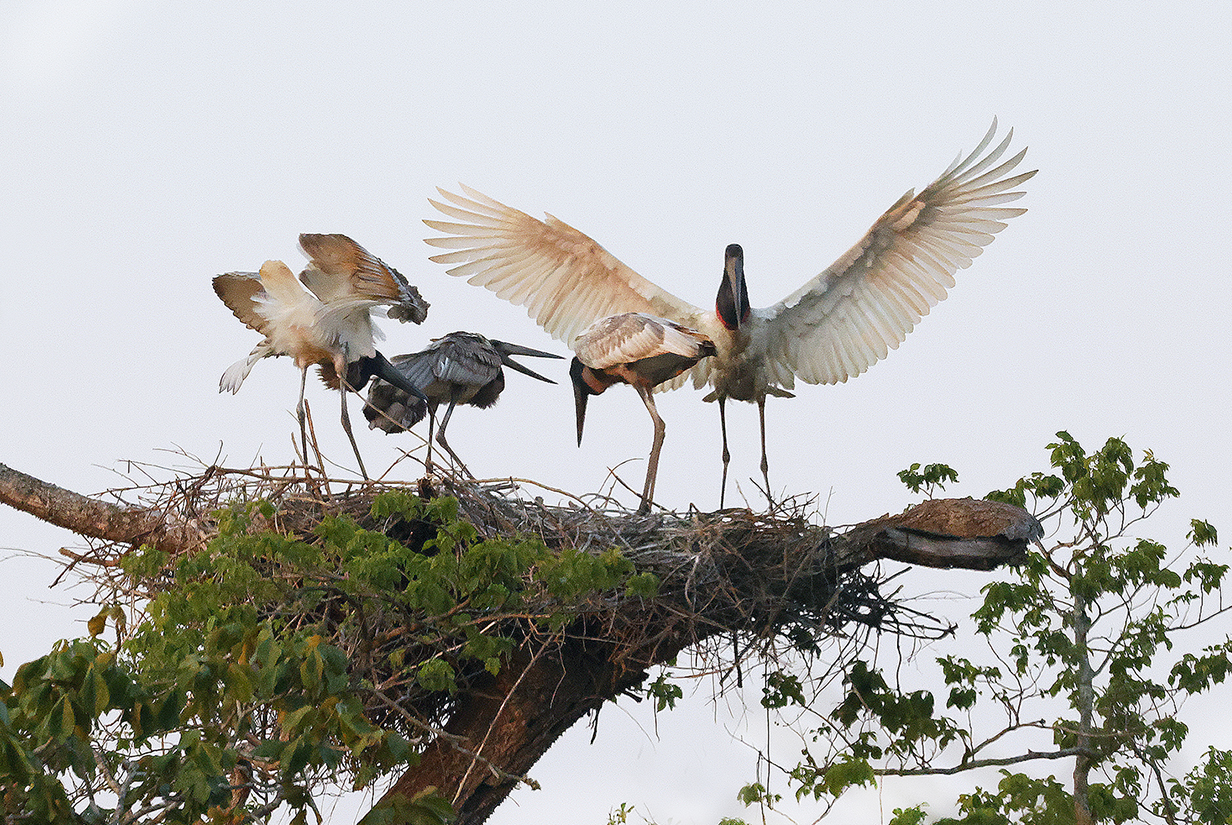
Adult Jabiru stork delivering food to three excited chicks (near Tapacare Resort, Trinidad)
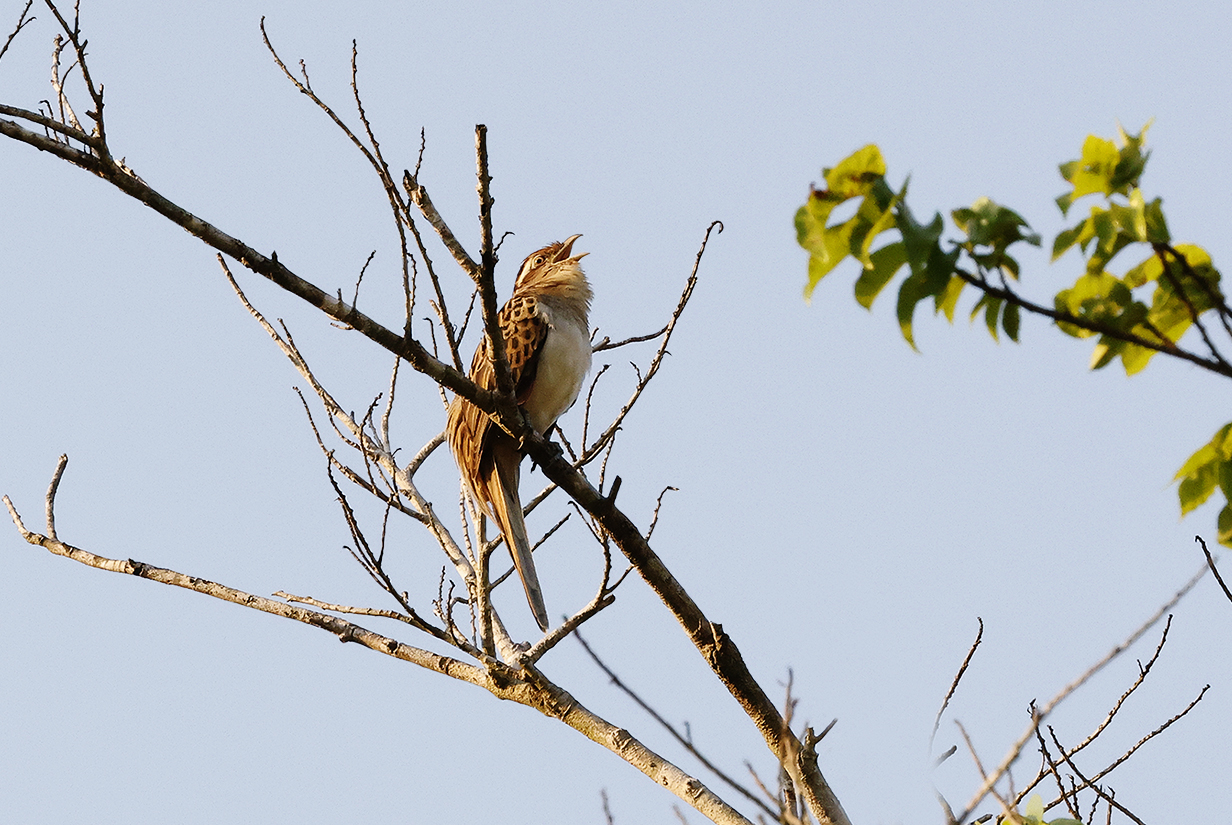
Striped cuckoo (outside Tapacare resort)
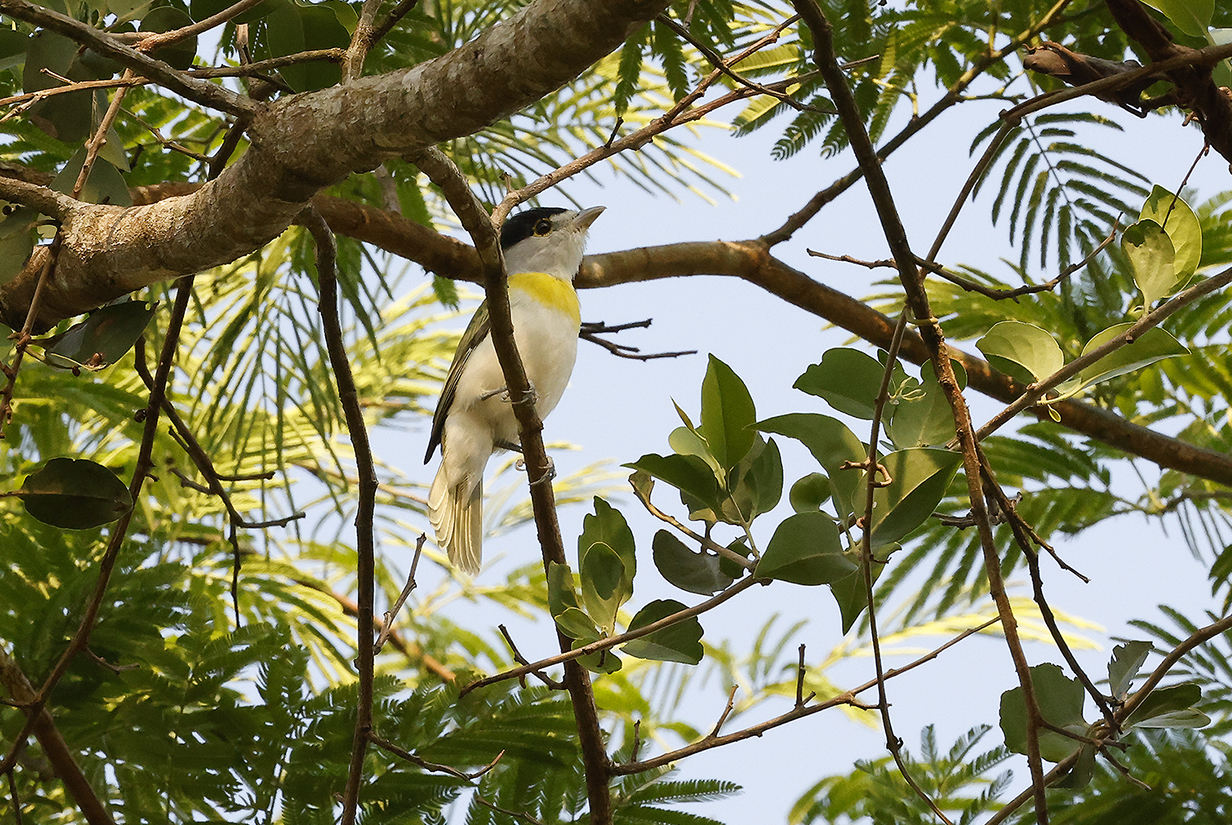
Green-backed becard

Rusty-backed spinetail
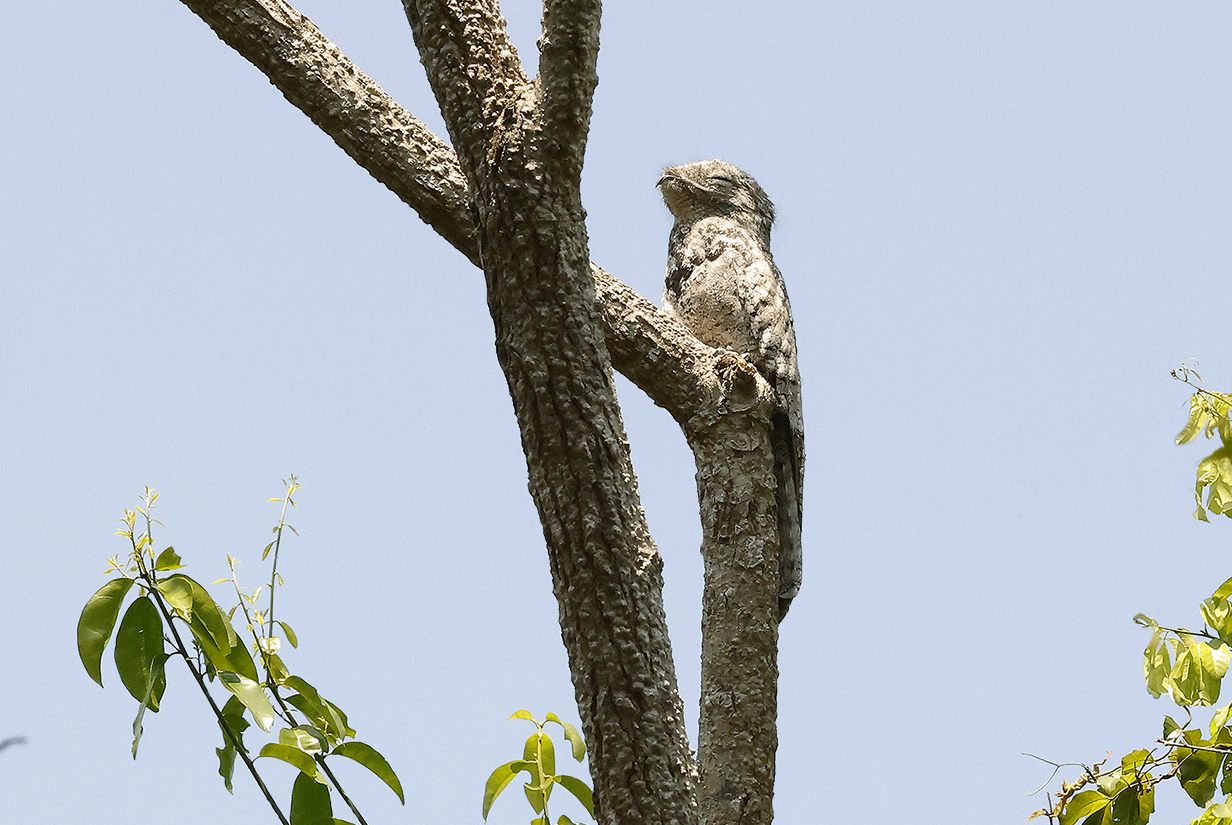
Great potoo
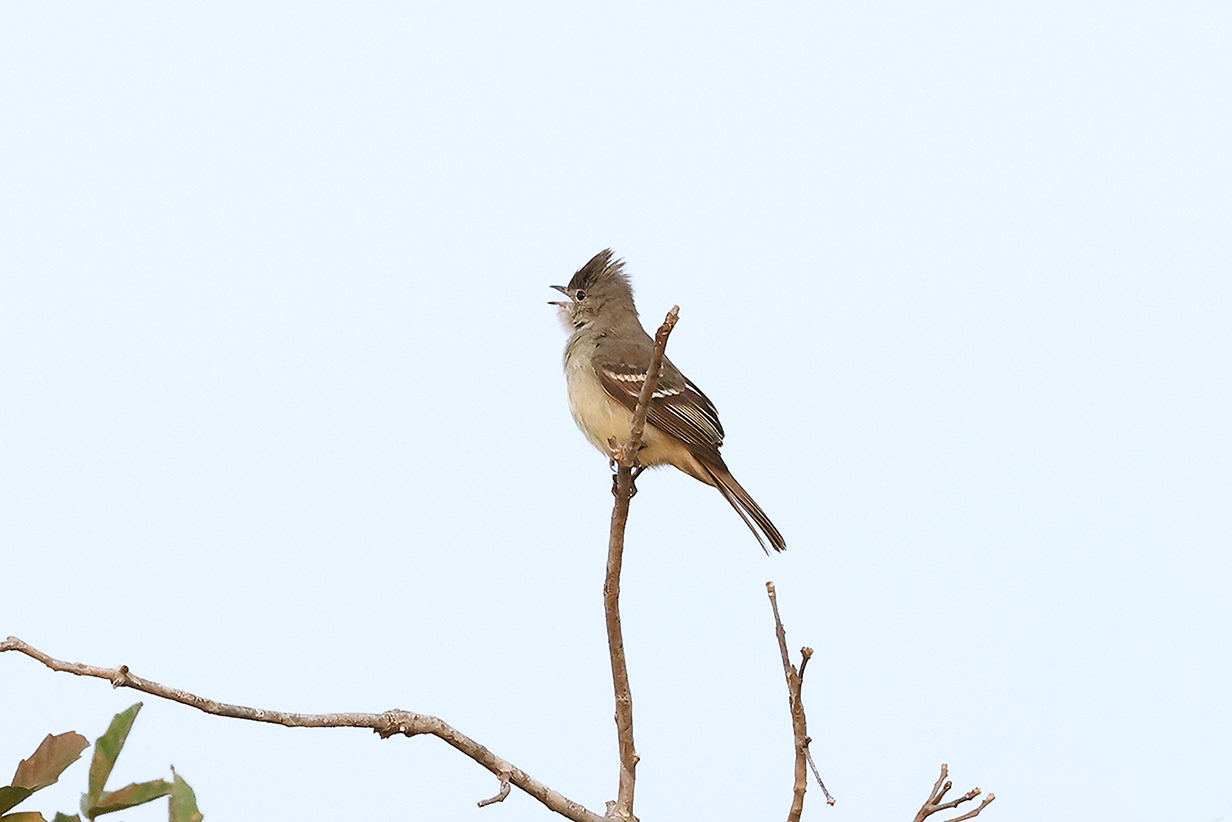
Yellow-bellied elaenia in morning sunlight
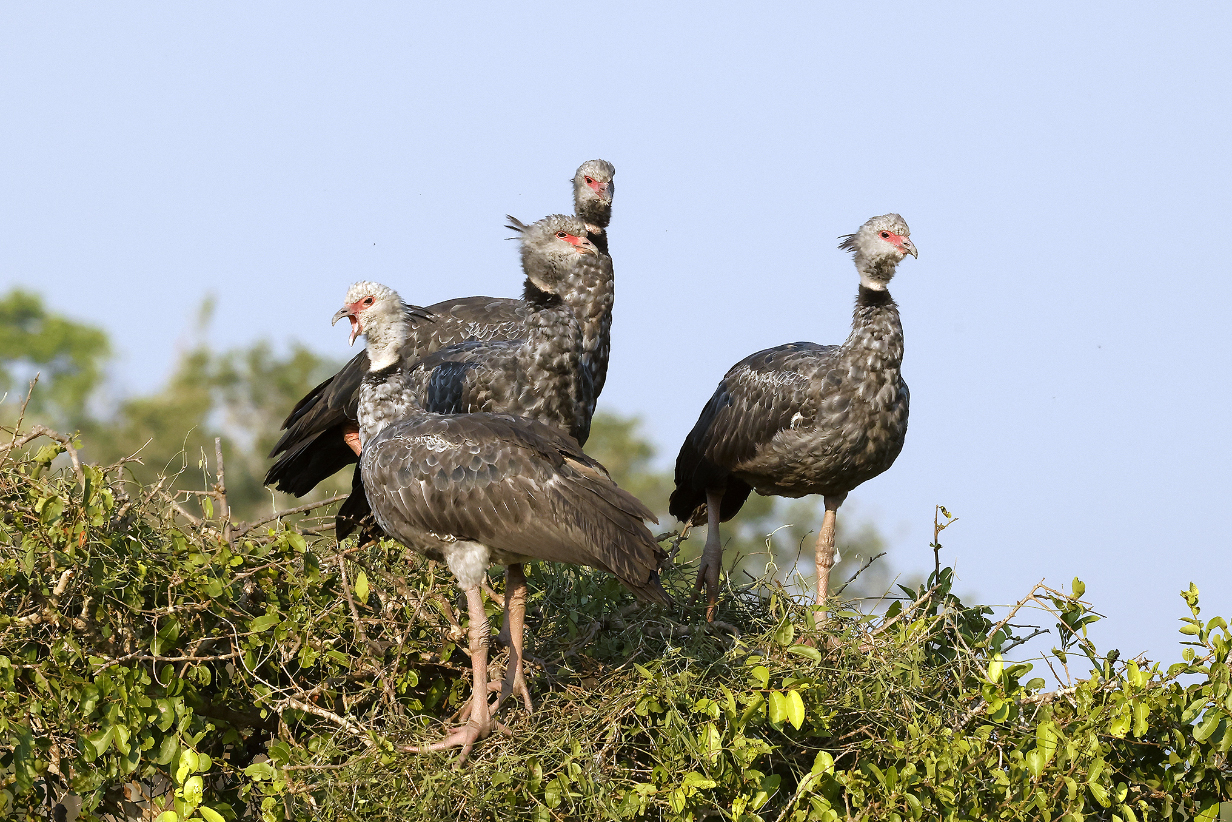
Southern screamer (through the window of the bus -- not the best angle; not ideally sharp)

Toco toucan (one of the last birds we saw near Trinidad)
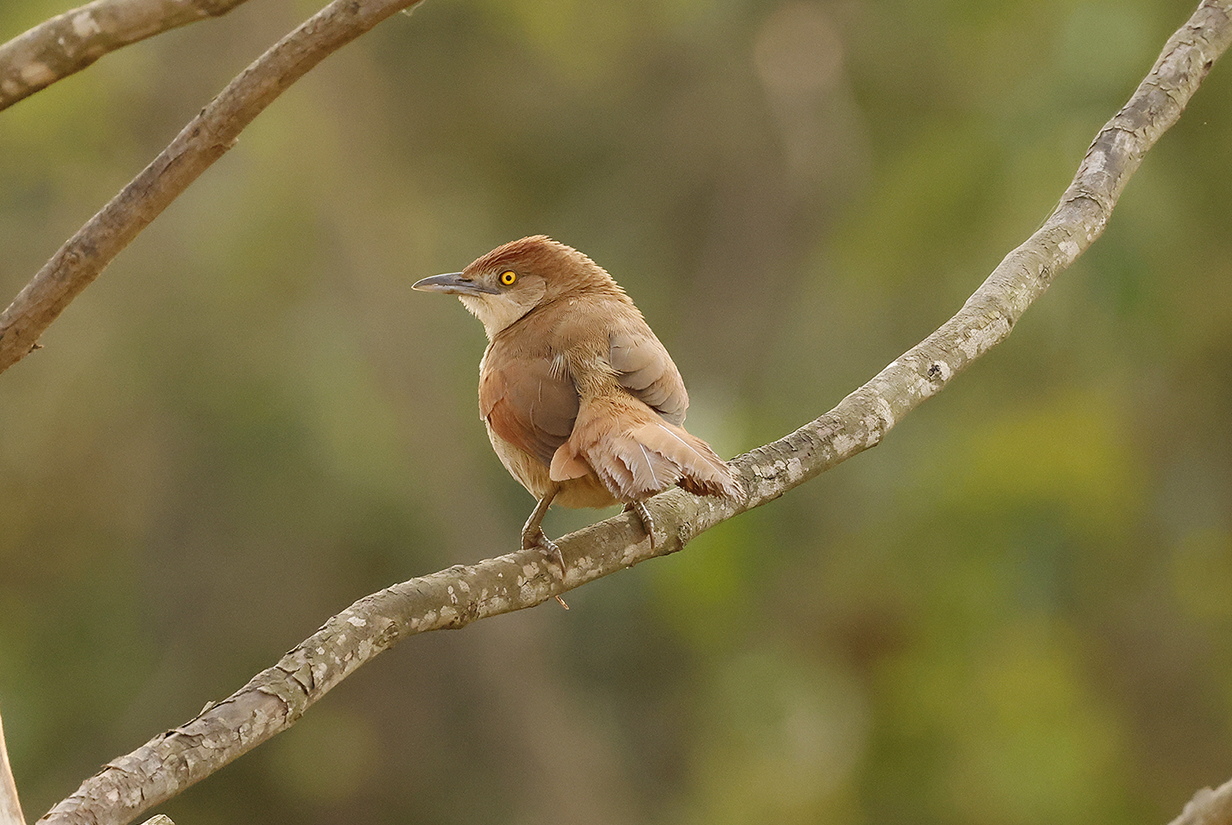
Greater thornbird

Wren-like rushbird (This is John's life bird at Cochabamba Lake)

Red shoveler (This is John's life bird at Cochabamba Lake)
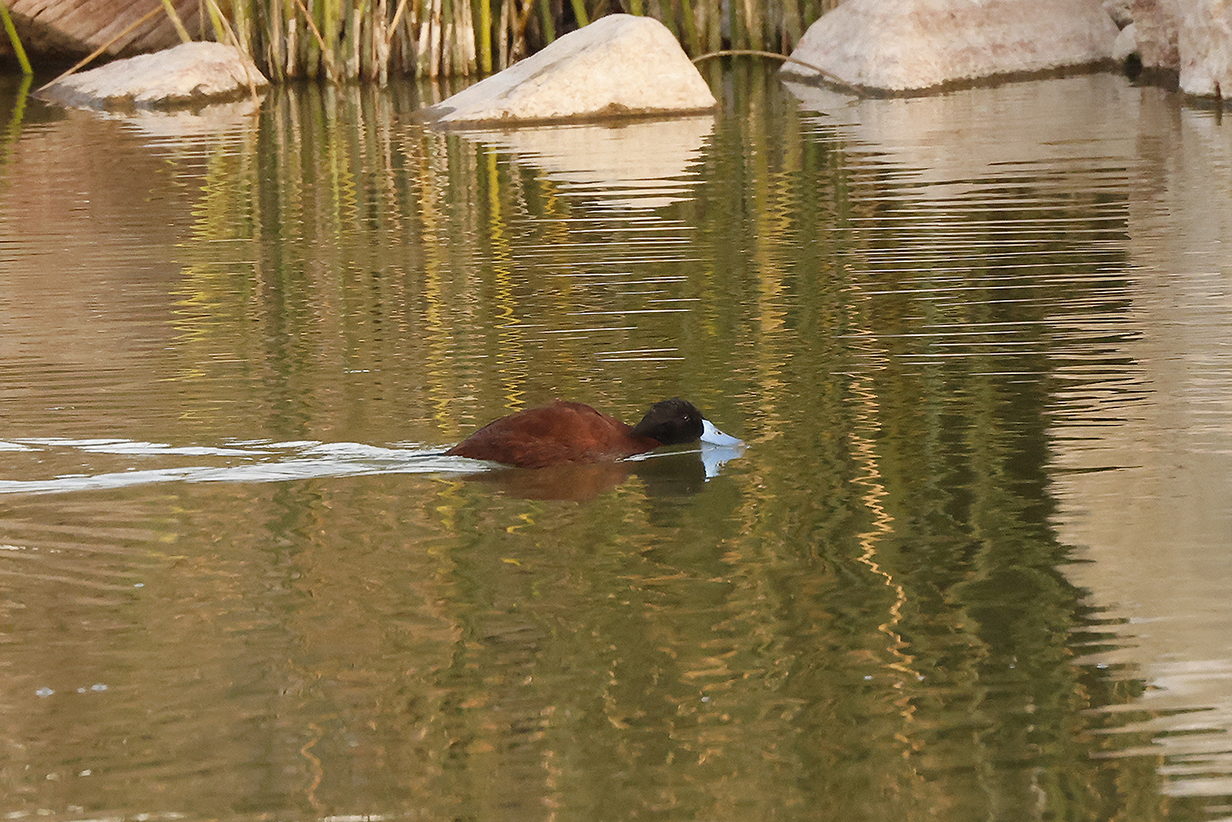
Andean duck (This is John's life bird at Cochabamba Lake, another Oxyura duck with blue bill, red body, and usually a stiff tail sticking straight up -- like Ruddy duck in North America and Blue-billed duck in Australia.)
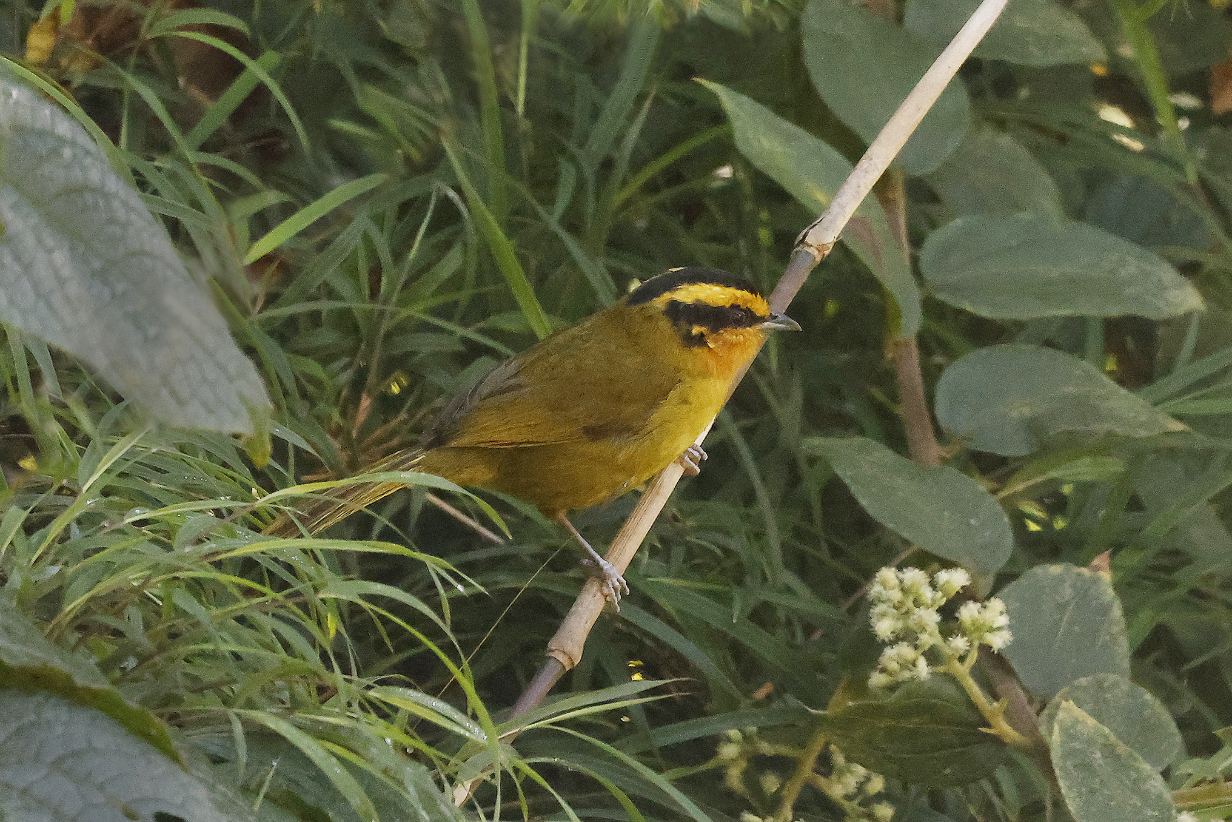
Orange-browed hemispingus (Now in Courani cloud forest, out of Cochabamba -- altitude ~ 9400 feet: This is John's life bird.)
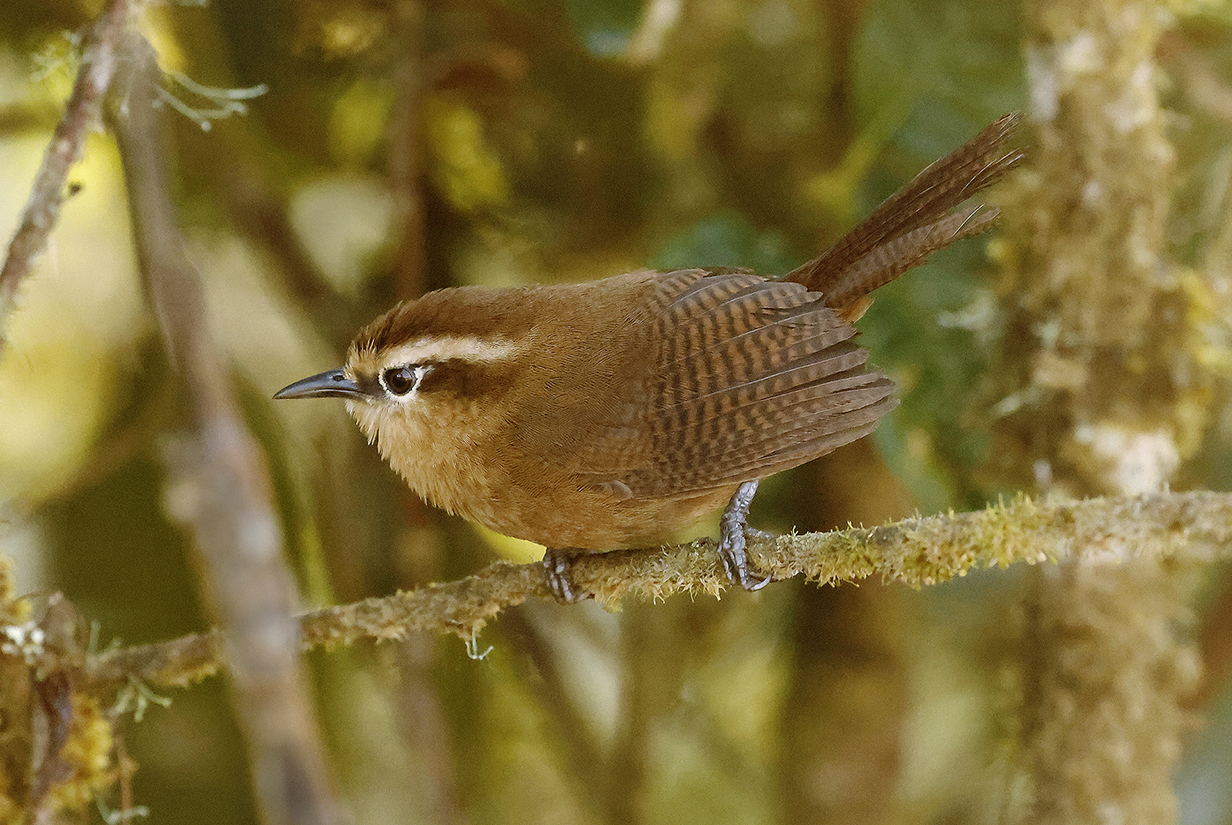
Fulvous wren (This is our life bird.)
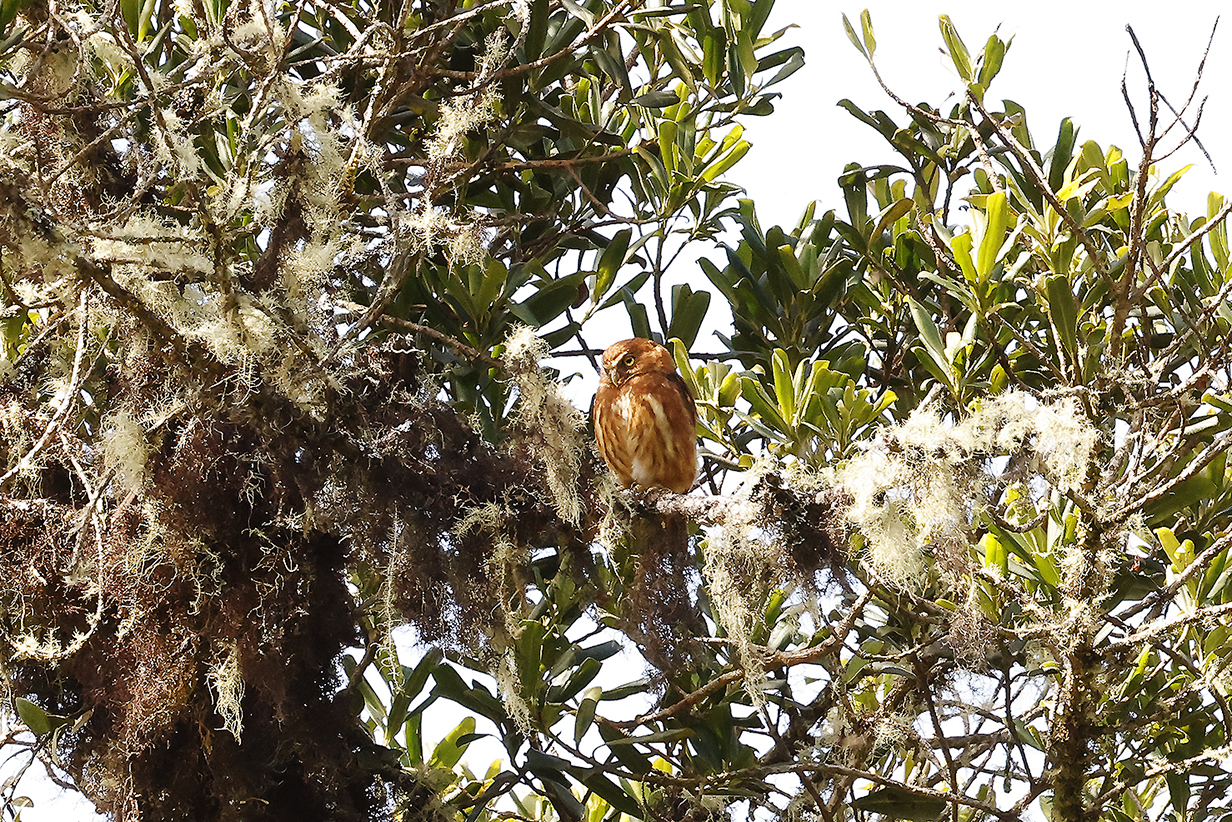
Yungas pygmy-owl (This is our life bird.)
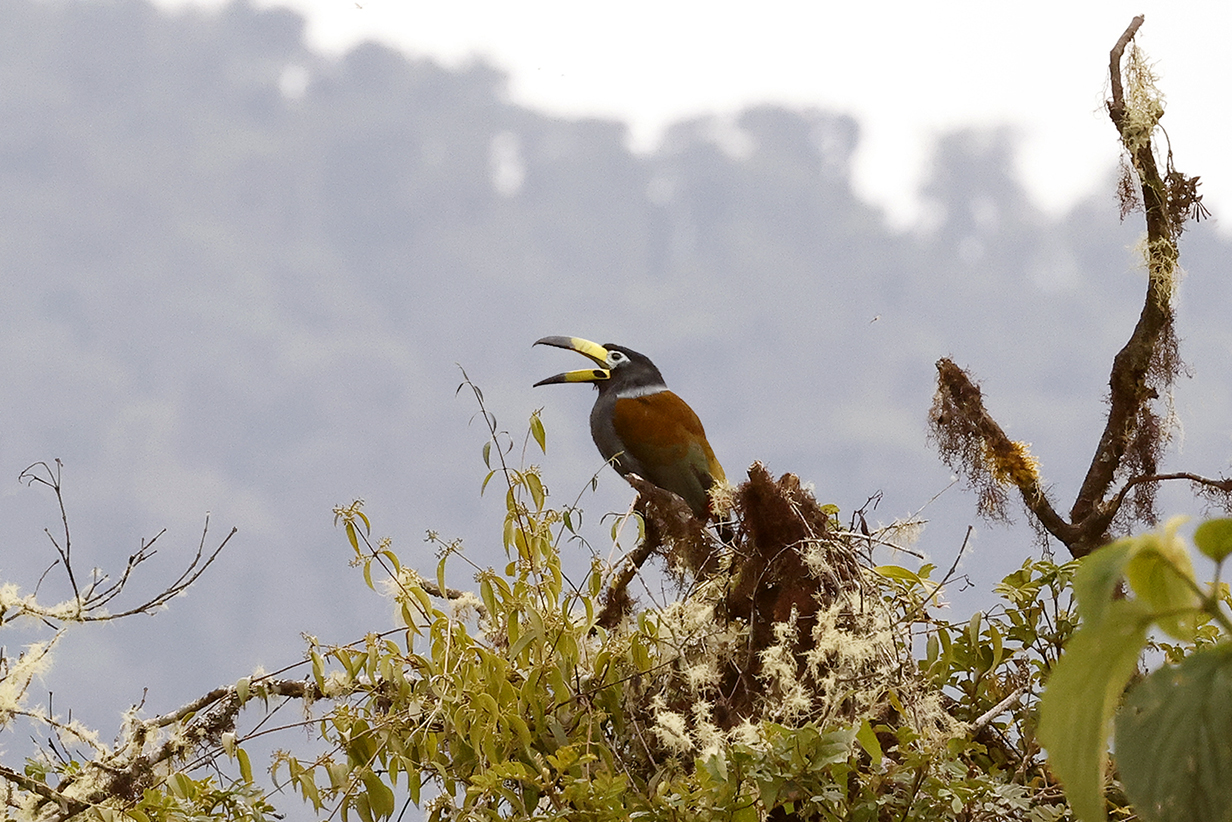
Hooded mountain-toucan (This is our life bird.)
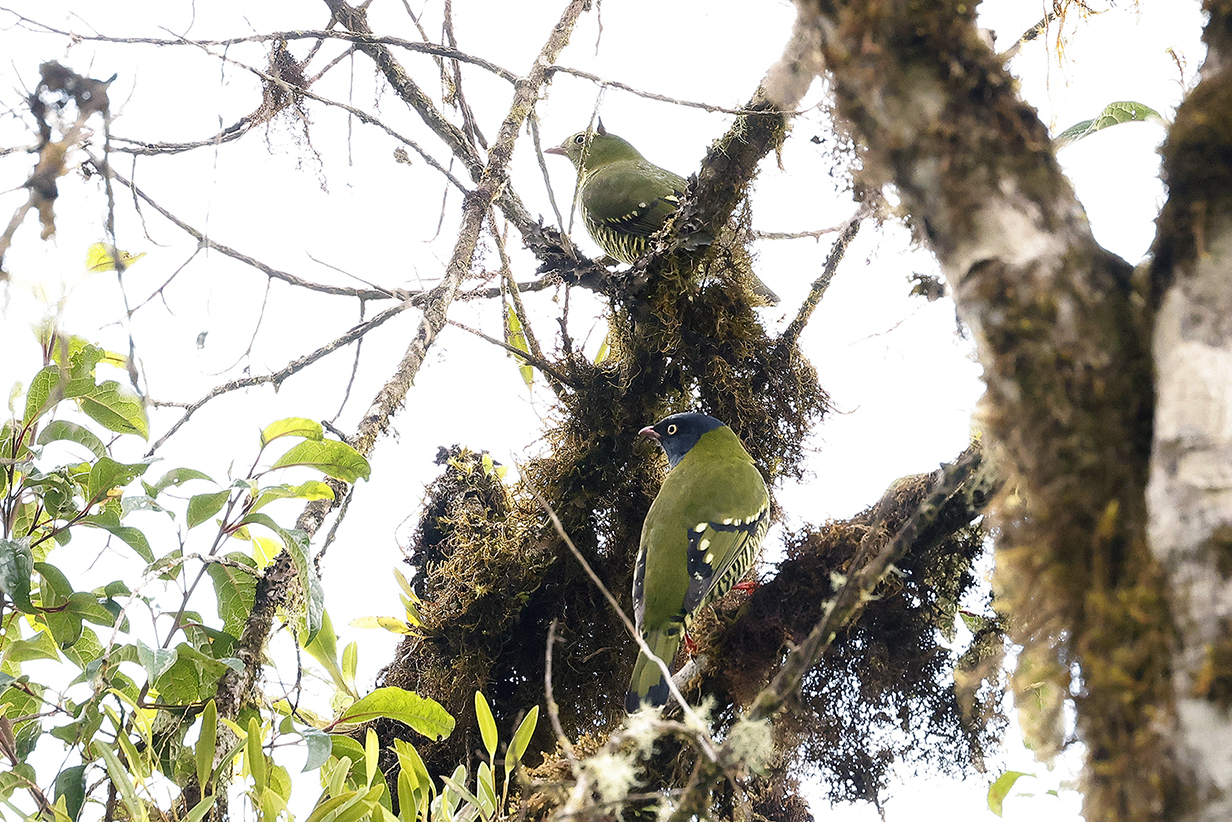
Barred fruiteater (These are John's life birds.)

Gould's inca (Coeligena inca inca near Cochabamba. In 2022, Clements split it from Collared inca, Coeligena torquata, which we have seen in Ecuador.)

White-banded tyrranulet

Bolivian warbling finch (Polylepis forest near Cochabamba: This is John's life bird.)
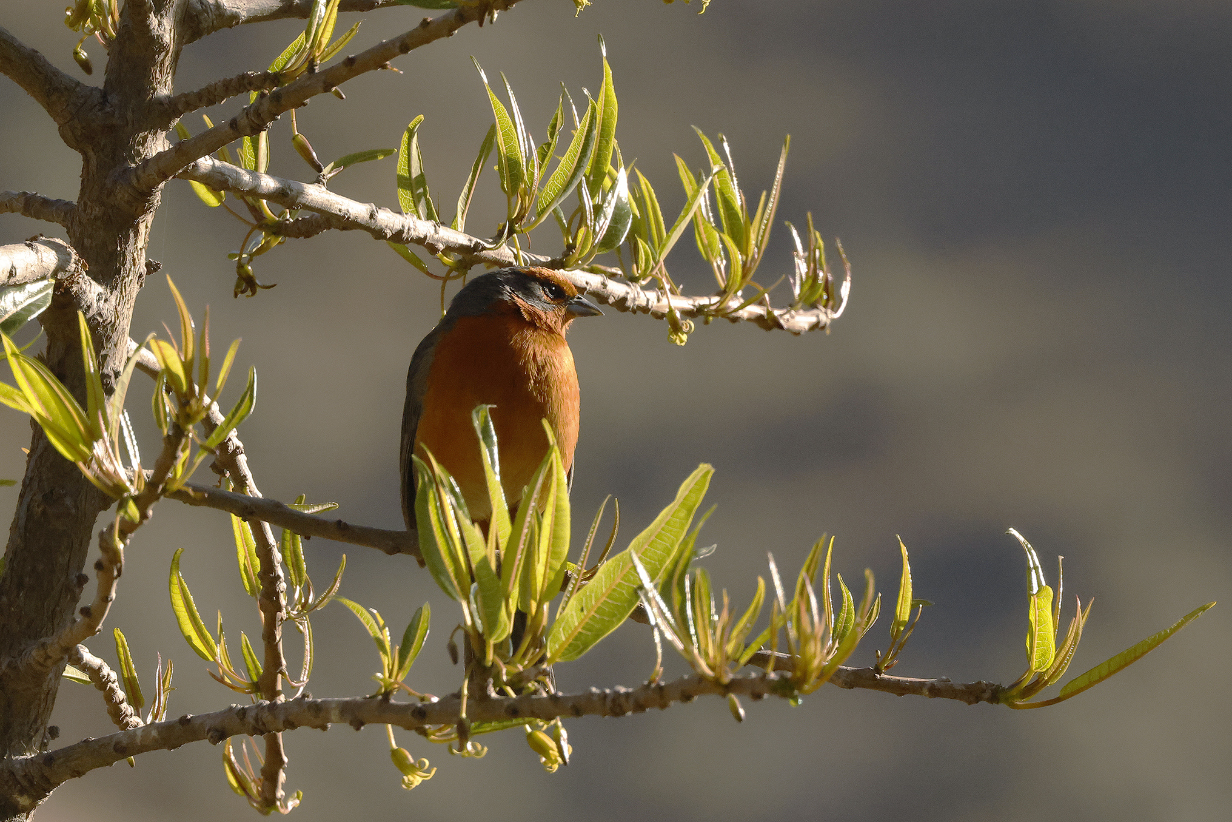
Cochabamba mountain finch (This is John's life bird.)

Yellow-billed tit-tyrant (This is John's life bird.)

Mountain caracara (This is a juvenile in behavior as well as plumage: I was less than 15 feet away, and he paid no attention to me -- he was focused only on looking around for food.)
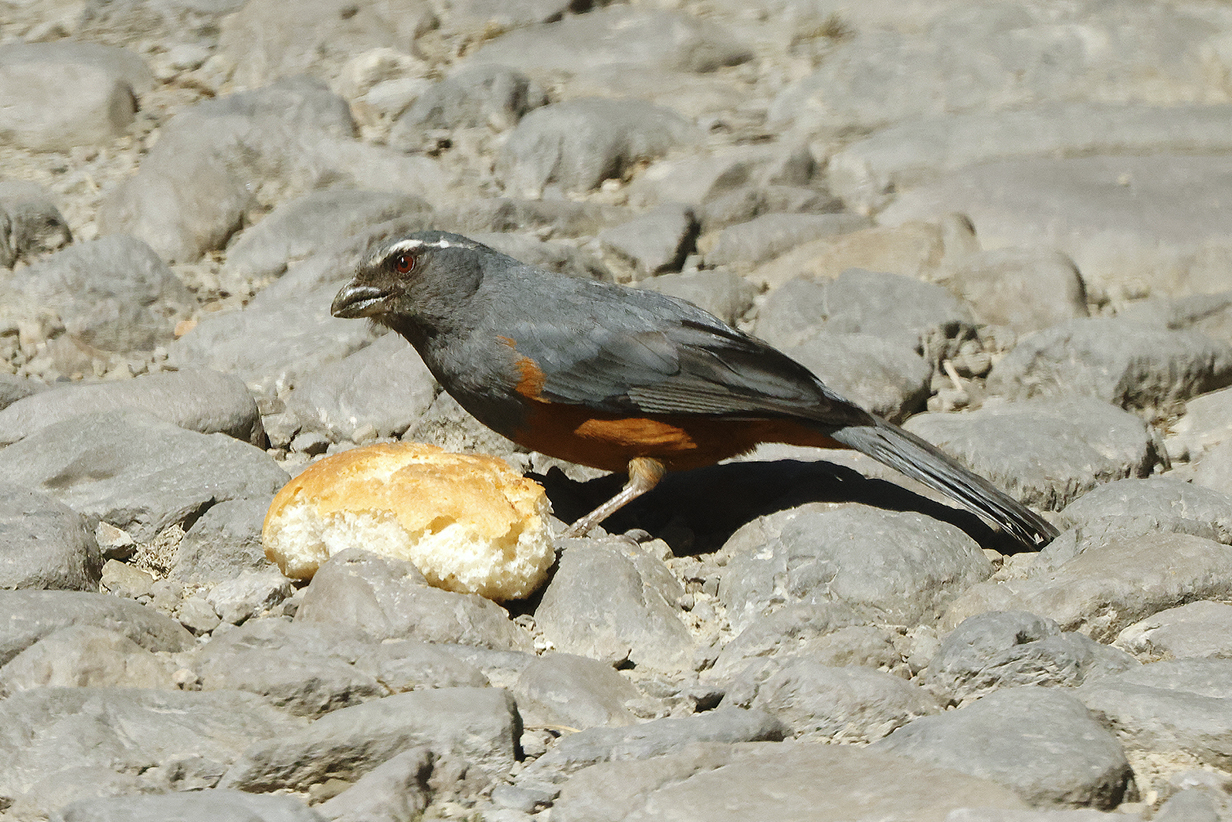
Rufous-bellied mountain tanager (new for John earlier the same morning)

Plumbeous sierra finch (not a good picture ... but a hard bird)
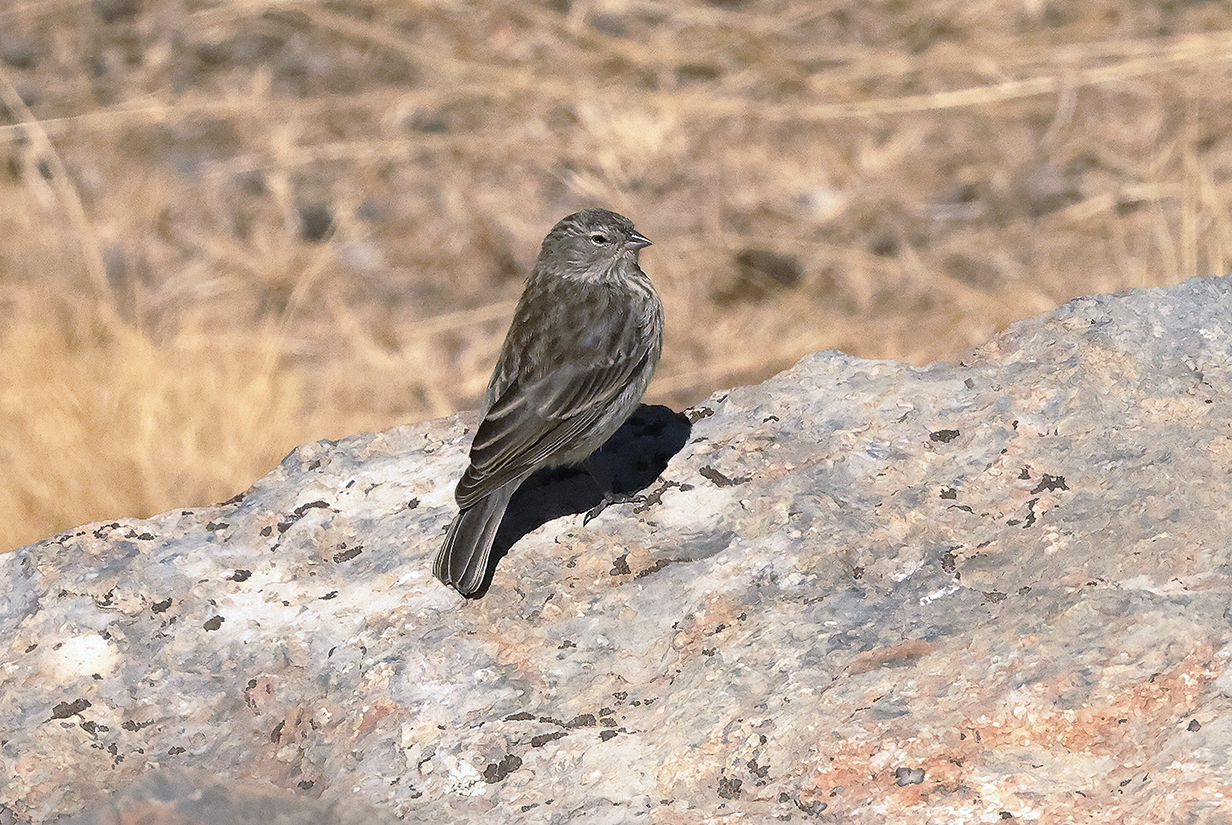
Ash-breasted sierra finch (I think. Please correct me if I am wrong.)
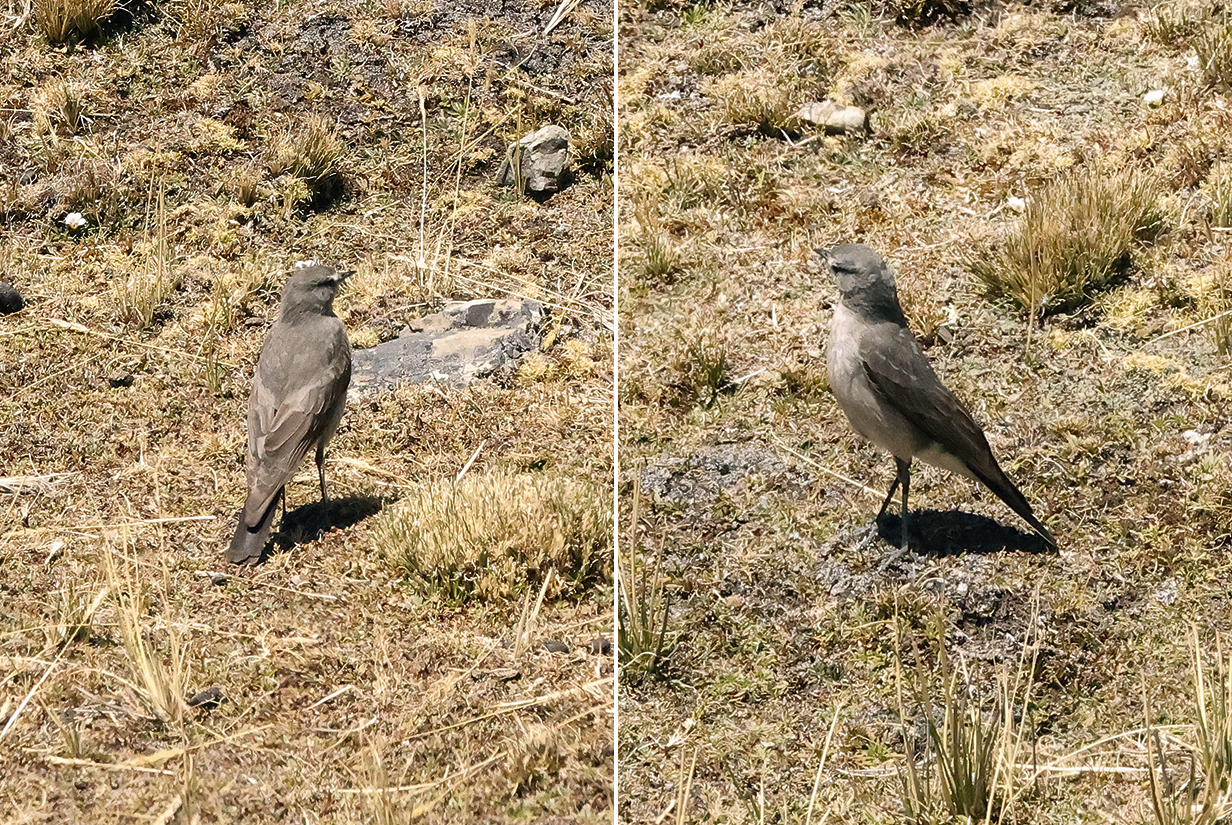
Taczanowski's ground-tyrant (This is John's life bird. Note the upright stance and the fact that the white eyebrow extends to but not beyond the eye. This bird was IDd in real time by our guides and with ID recorded as a sound file. Otherwise I would have trouble with IDs of pictures of ground-tyrants: we saw many on the Cerro Tunari altiplano, and many look similar. This is also an example of the many pictures that I got that day of birds that were far away and not well photographed. I will add more such pictures when I have time.)
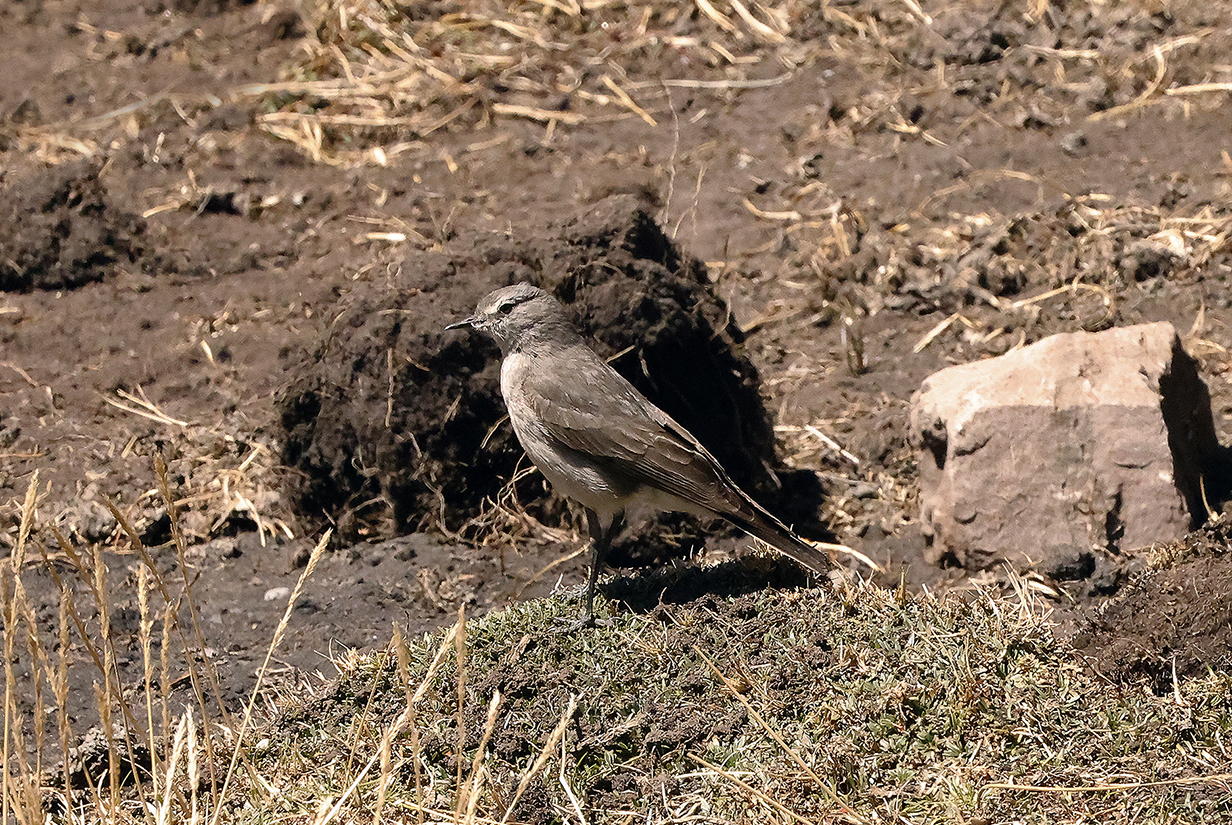
Taczanowski's ground-tyrant (I think. Please correct me if I am wrong.)
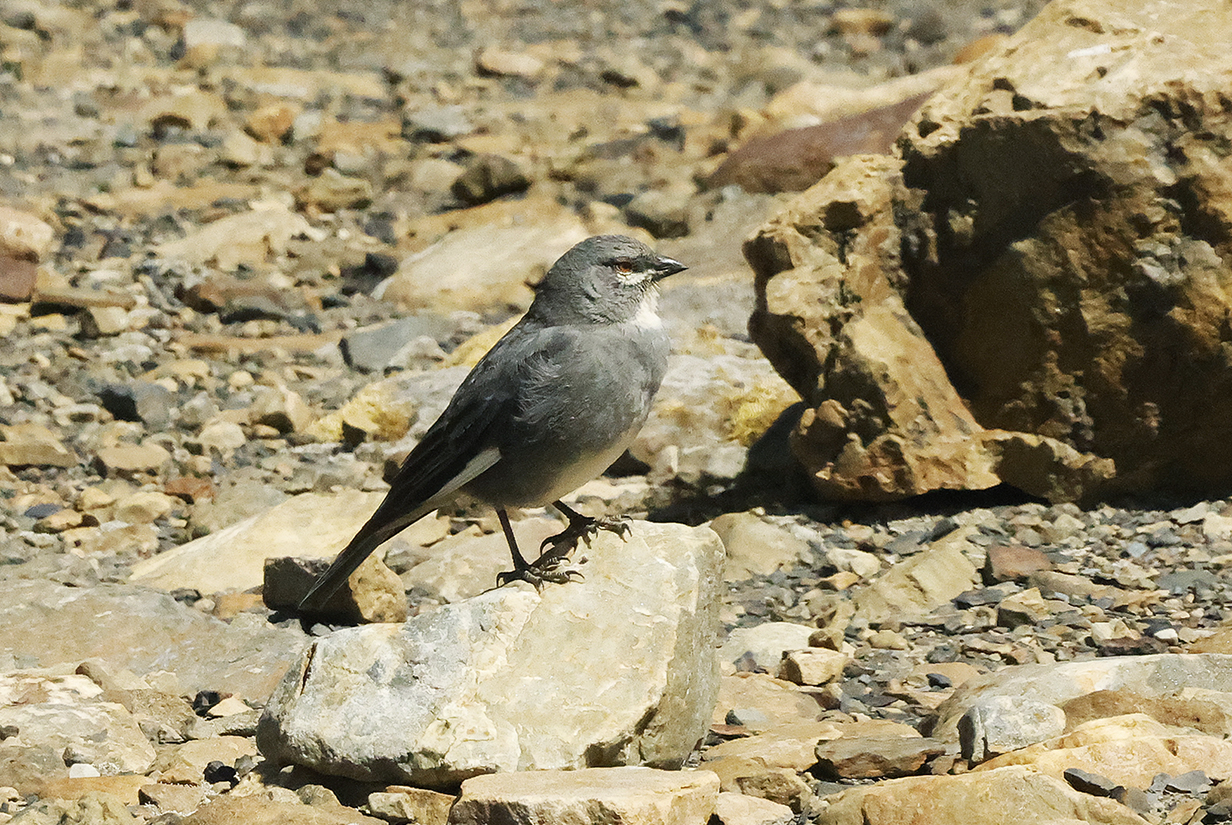
Glacier finch (This is John's life bird, seen at ~ 13,850 feet altitude)
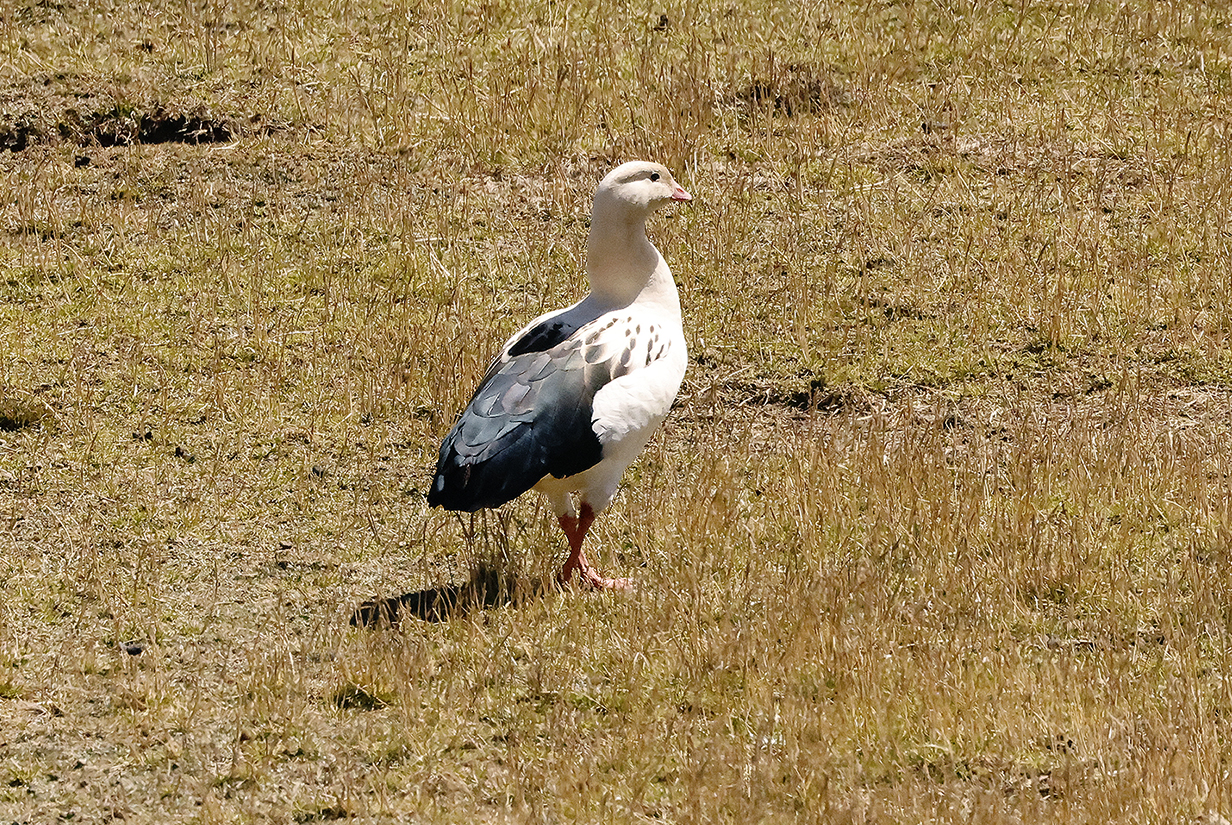
Andean goose (This is John's life bird.)
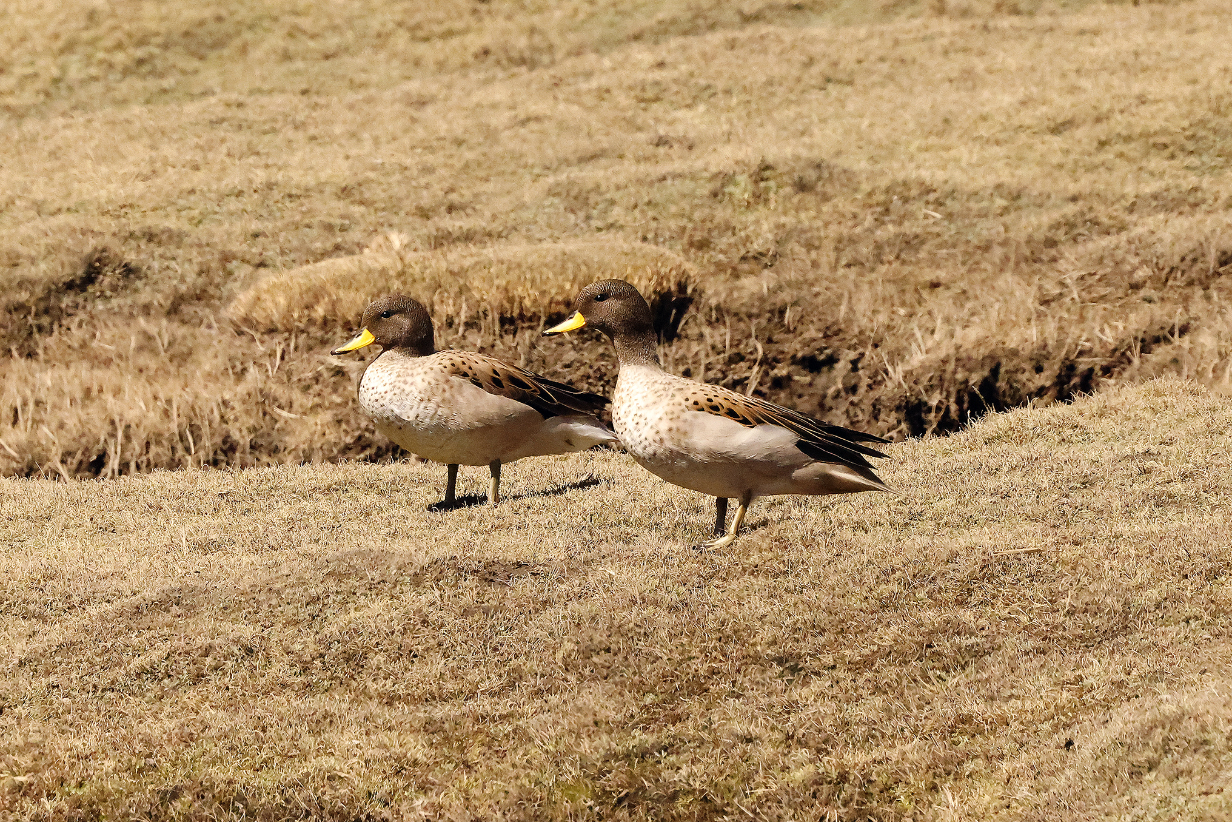
Andean yellow-billed teal (These are John's life birds.)
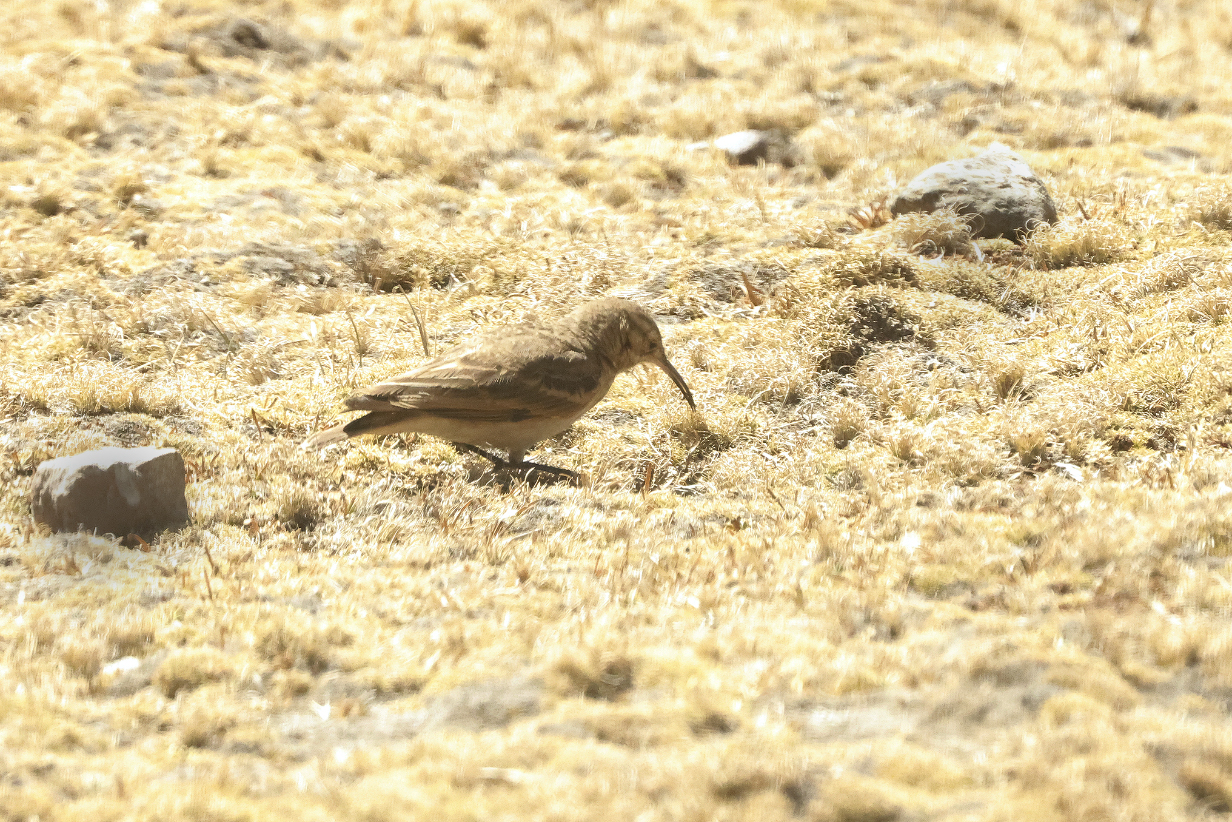
Slender-billed miner (This is John's life bird, photographed -- badly -- through the window of our bus.)
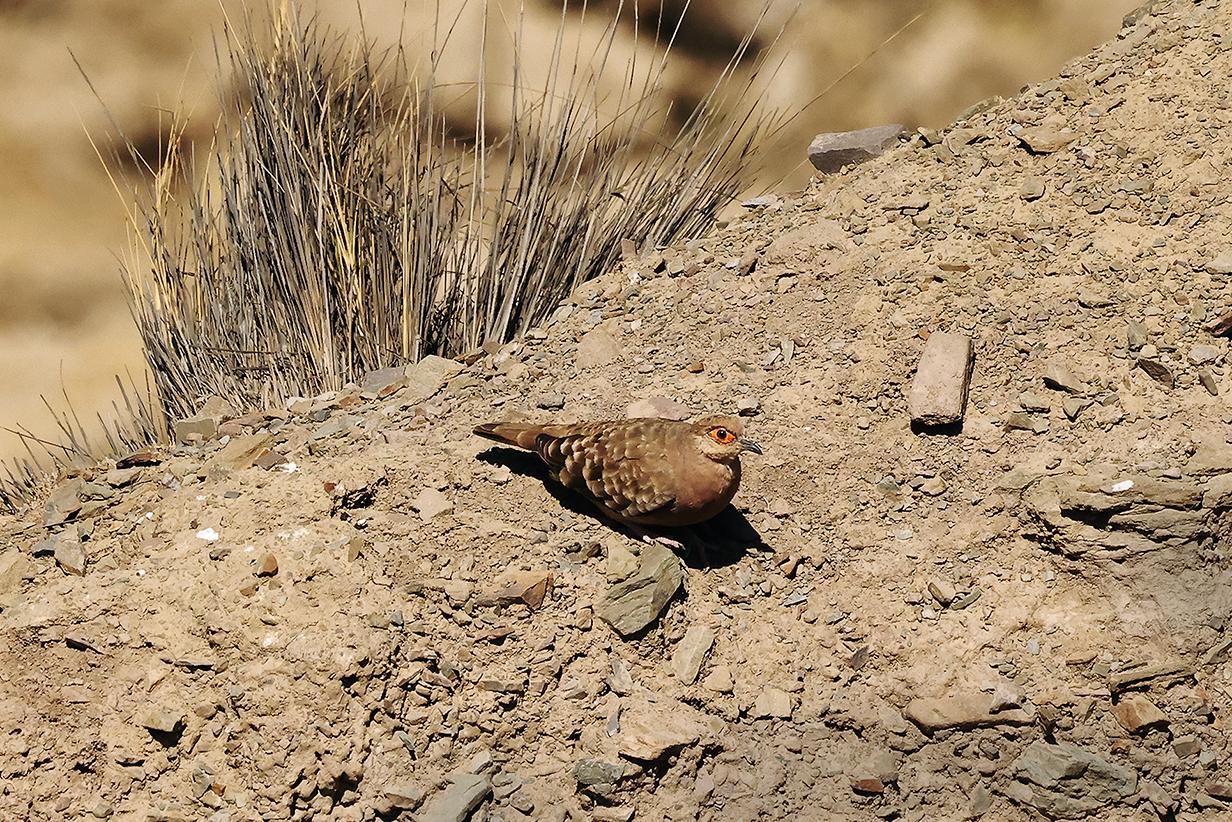
Bare-faced ground dove (This is our life bird.)
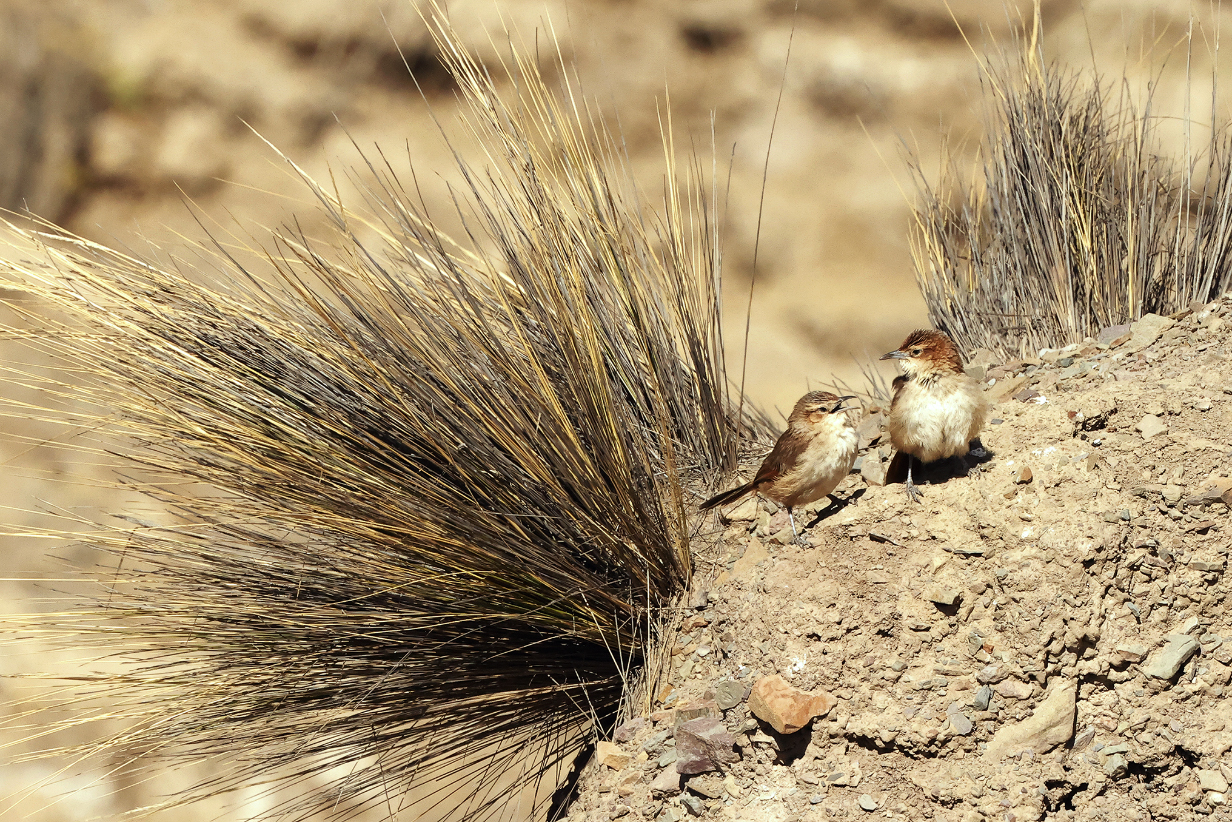

Streak-fronted thornbird (These are our life birds.)
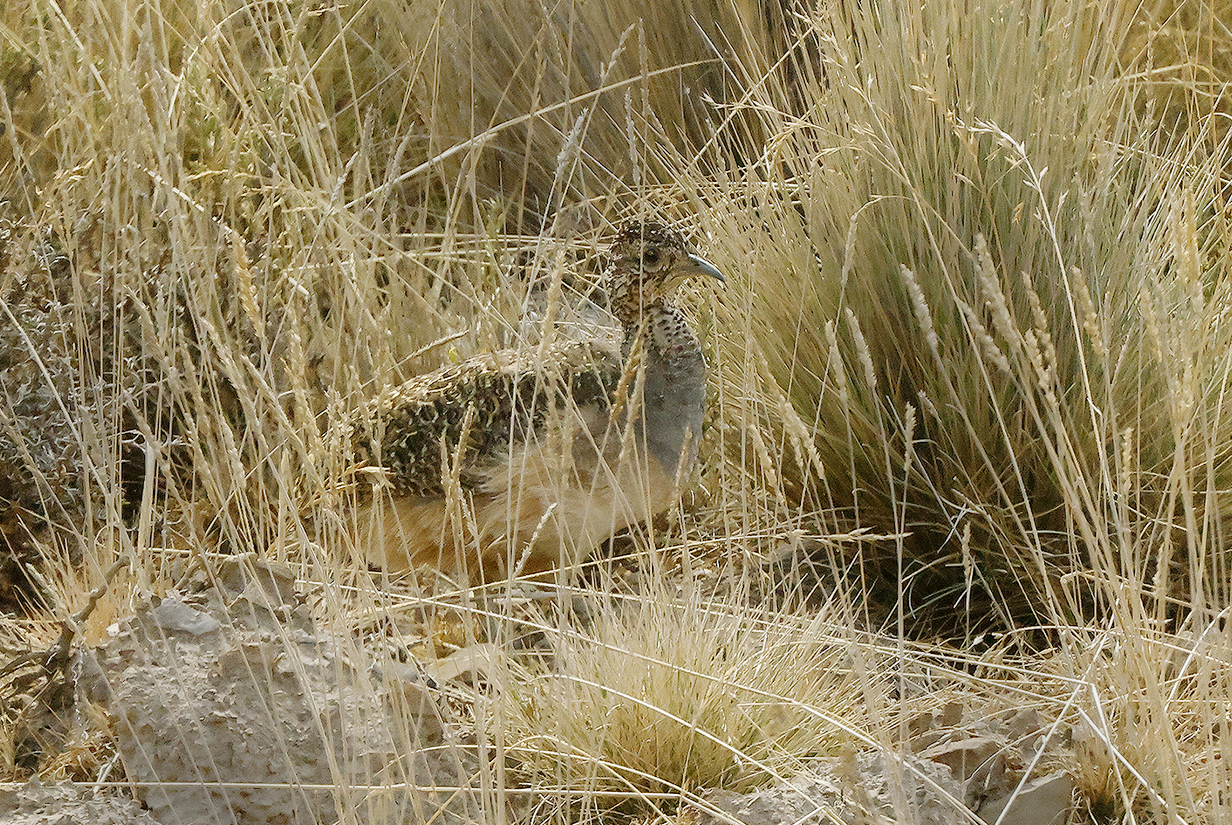
Ornate tinamou (One of a pair: tinamou are always among our most prized sightings These are our life birds.)

Titicaca grebe gave us a wonderful show from as close as 10 feet, in Lake Titicaca (12,500 feet altitude), on our last day of the tour. This is our life bird.
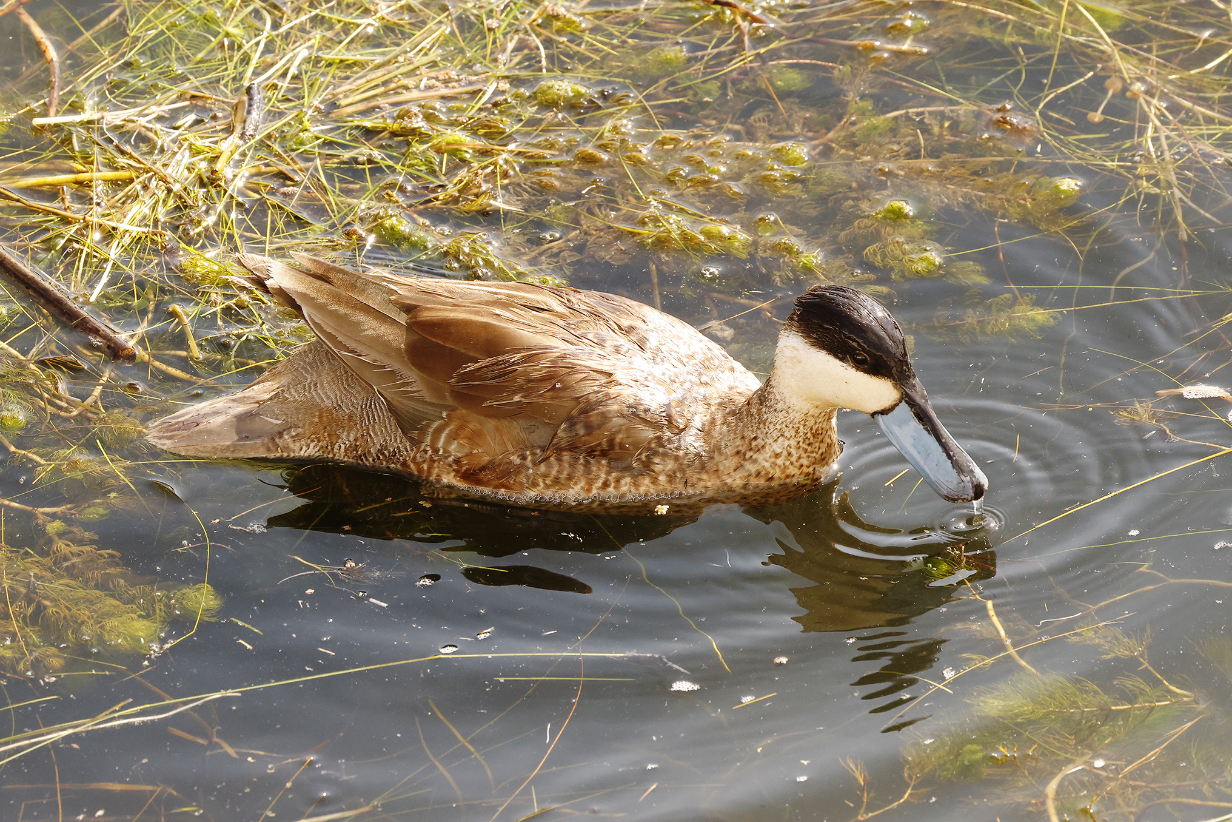
Puna teal (This is Mary's life bird, the last new bird of the trip. John got this species on an earlier day.)
Our bird pictures from around the world follow standard ecozones approximately but not exactly:
Birds from the USA and Canada: our house, Hornsby Bend and greater Austin, Texas, California, Hawaii, Canada,
Neotropic birds from Central America and the Caribbean: Honduras, Costa Rica, Panama, Trinidad and Tobago
Neotropic birds from South America: Ecuador, Ecuador 2017, Brazil.
Western palearctic birds: Europe: Germany, Finland, Norway, Europe: United Kingdom, Europe: Spain, the Canary Islands, Europe: Lesbos, Greece, Israel
Eastern palearctic birds: China
Birds from Africa: The Gambia, South Africa
Indo-Malayan birds from India: North-west (Delhi, Uttar Pradesh, Uttarakhand) India: North-east (Assam, Arunachal Pradesh, Meghalaya) India: Central (Maharashtra, Madhya Pradesh)
Birds from Australia, New Zealand.
For our 2014 December trip to India, see this travelog.
For our 2016 May-June trip to India, see this travelog.
For our 2017 April trip to High Island, Texas, see this web site.
For our 2018 March trip to India, see this travelog.
For our 2018 May trip to China, see this travelog.
For our 2018 November trip to China, see this travelog.
For our 2019 April trip to High Island, Texas, see this web site.
For our 2019 July trip to China, see this travelog.
For our 2021 April trip to High Island, Texas, see this web site.
For our 2021 December trip to Ecuador, see this web site.
For our 2022 January-February trip to Peru, see this web site.
For our 2022 July-August trip to Australia and Papua New Guinea, see this web site.
For our 2022 September trip to Bolivia, see this web site.
For our 2022 November-December pre-trip to Argentina (before our Antarctic cruise), see this web site.
For our 2022 November-December cruise to Antarctica, see this web site.
For our 2023 January birding in Chile, see this web site.
For our 2023 January-March cruise from Chile to Antarctica and around South America to Miami, FL, see this web site.
For our 2023 March-April birding in south Florida (after the Seabourn cruise), see this web site.
For our 2023 November-December birding to Sri Lanka, the Andaman Islands, and South India, see this web site.
For John's 2024 February-March birding in Colombia, see this web site.
For our 2024 May-June cruise from Iceland to Jan Mayen Island to and around the Svalbard Archipelago, see this web site.
For our 2024 June 25-30 stay in Paris, see this web site.
For our 2025 April 21 - May 3 trip to High Island, Texas, see this web site.